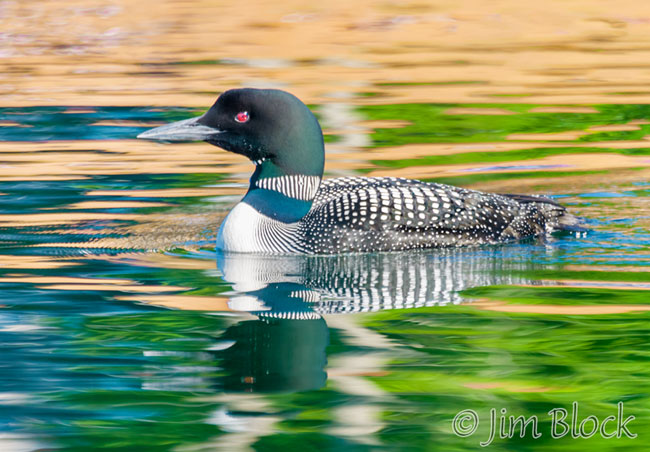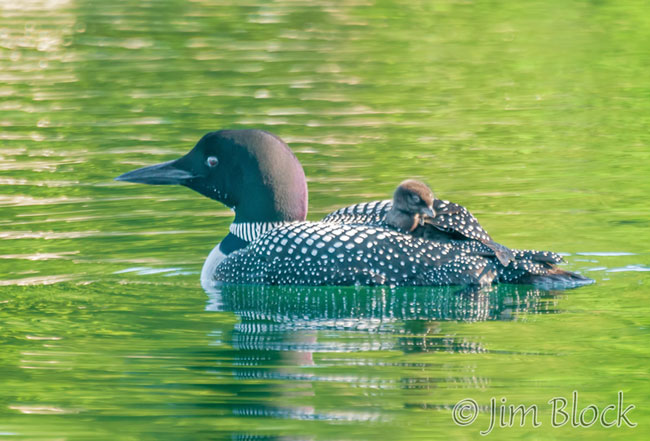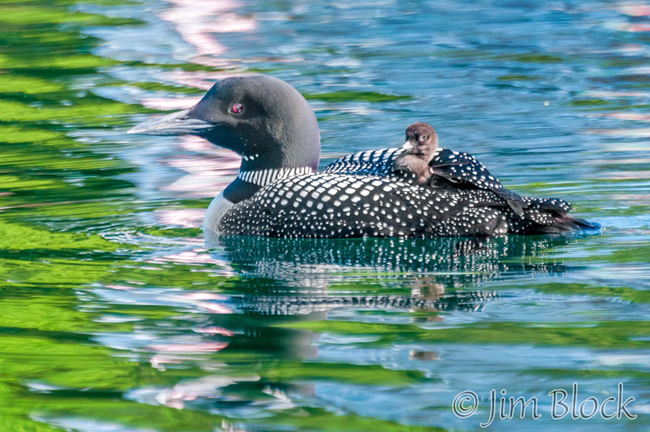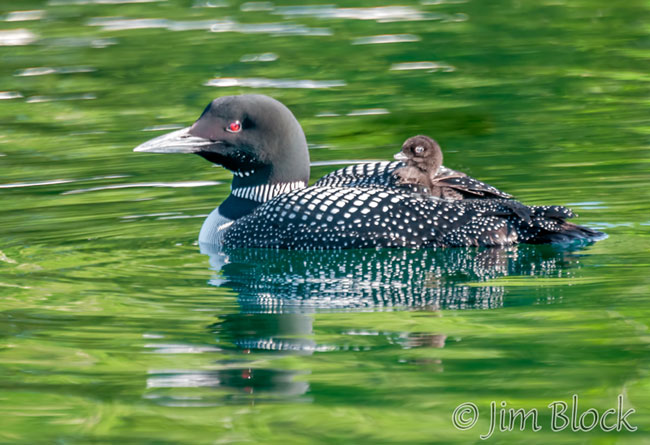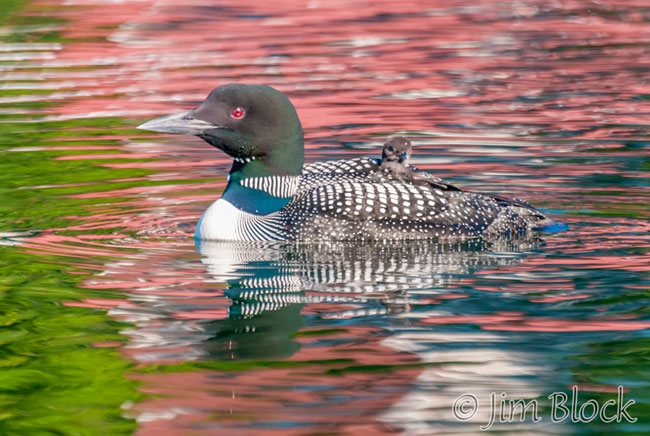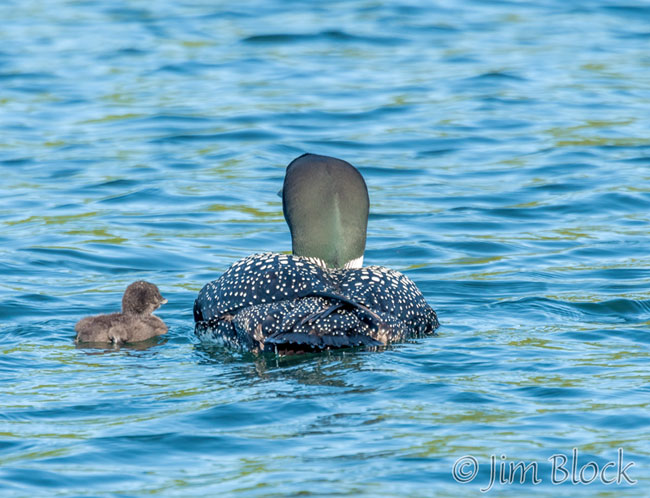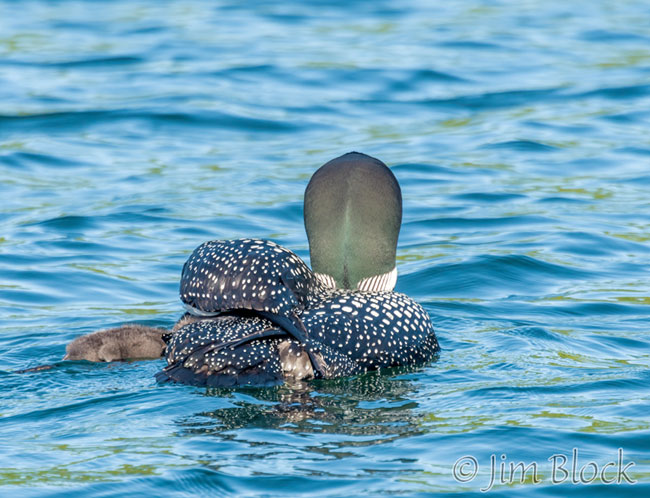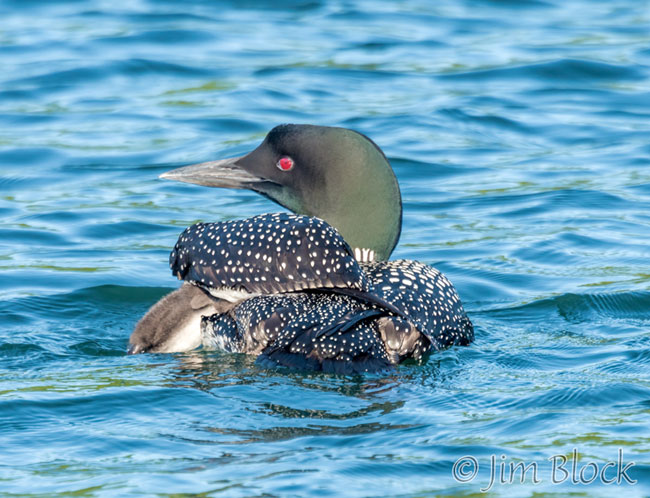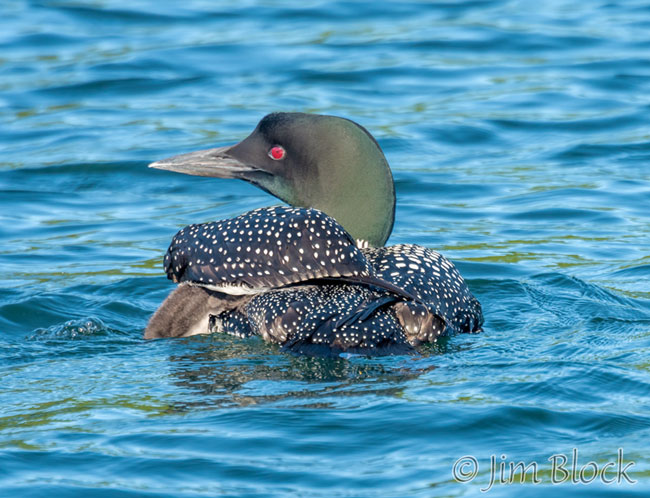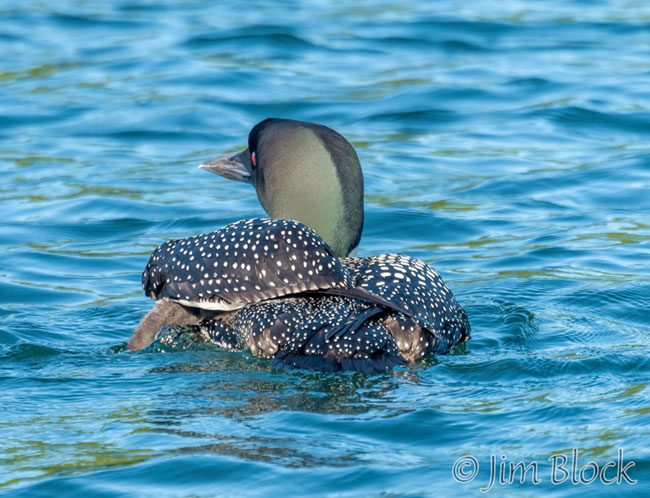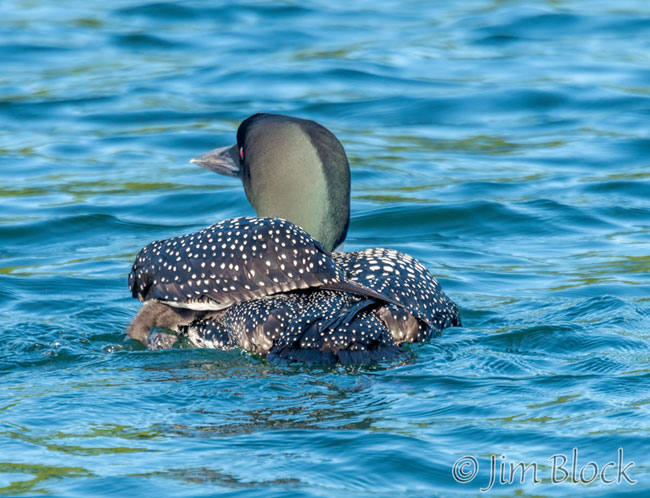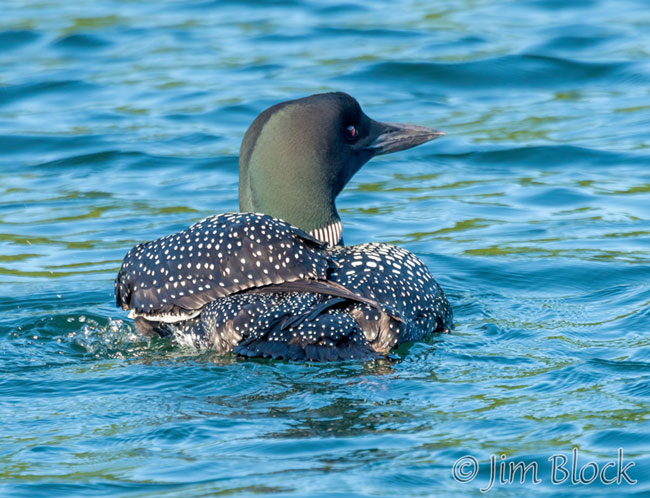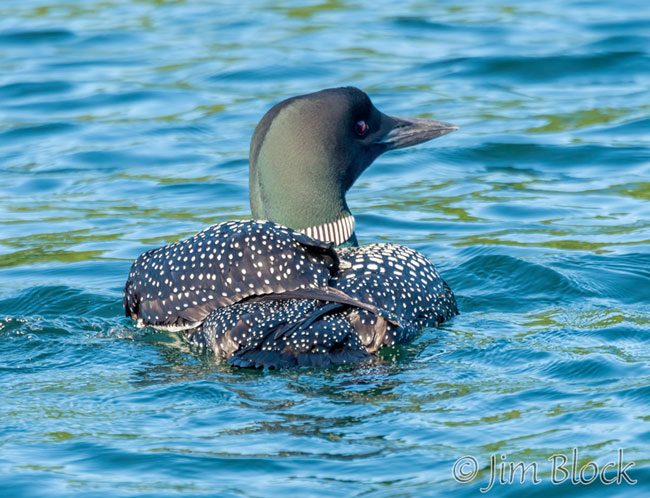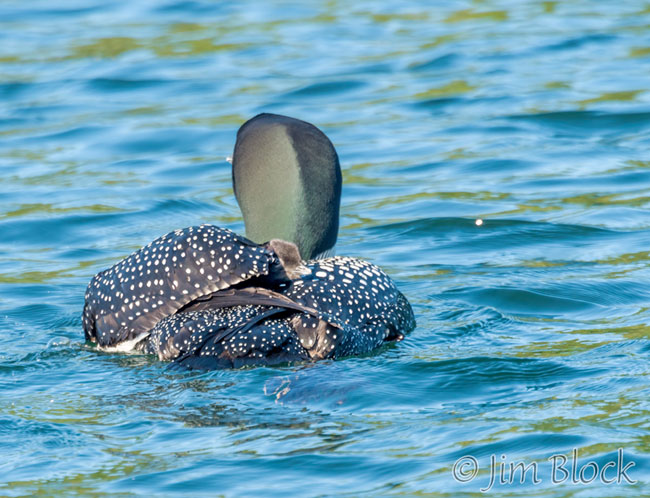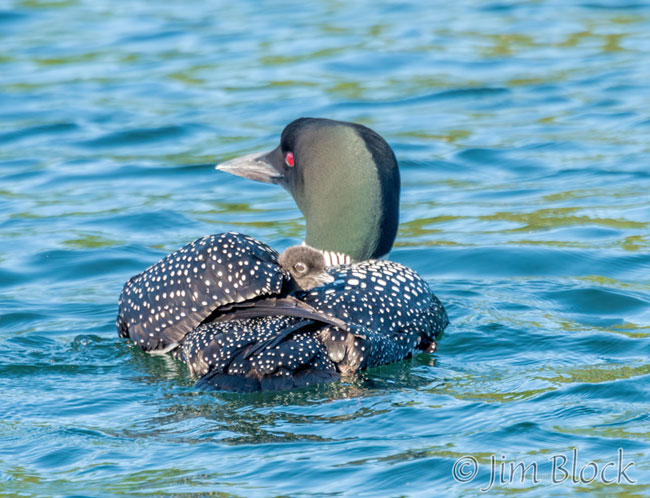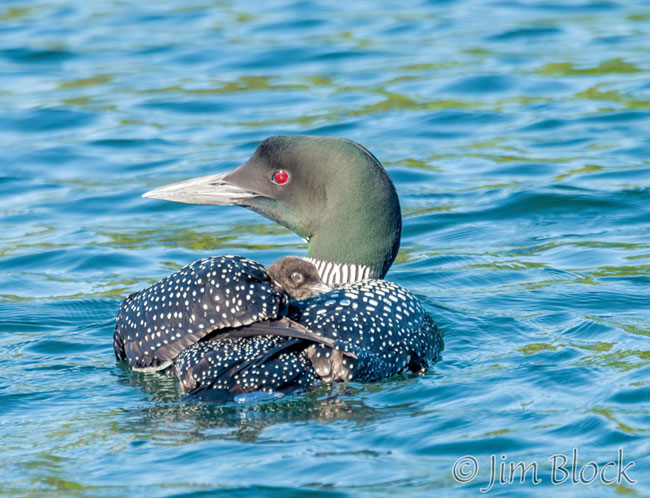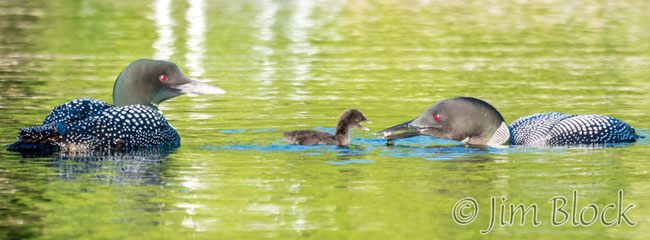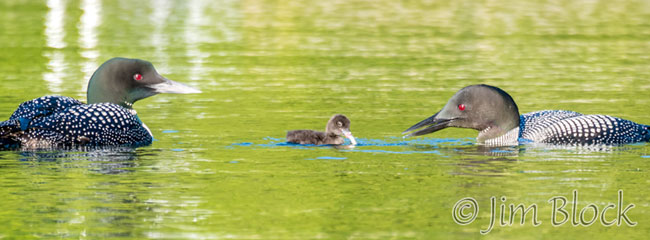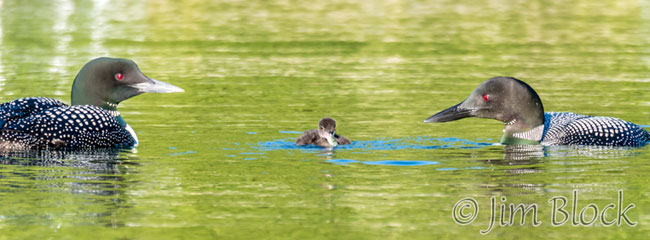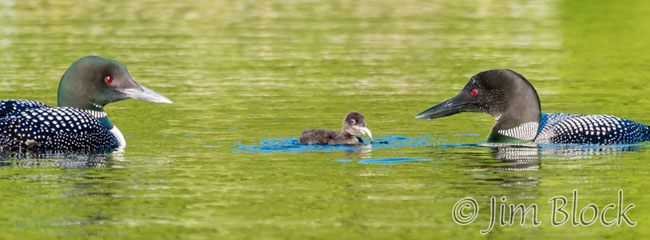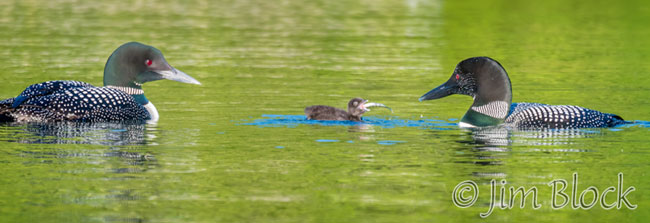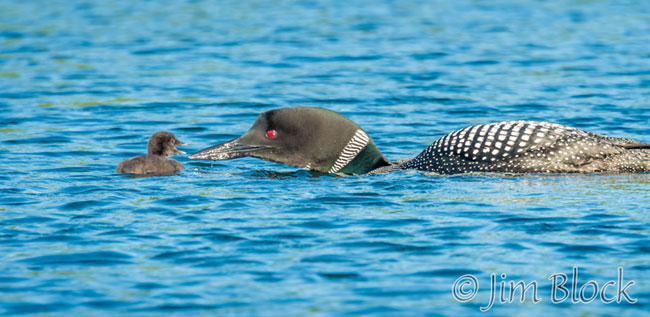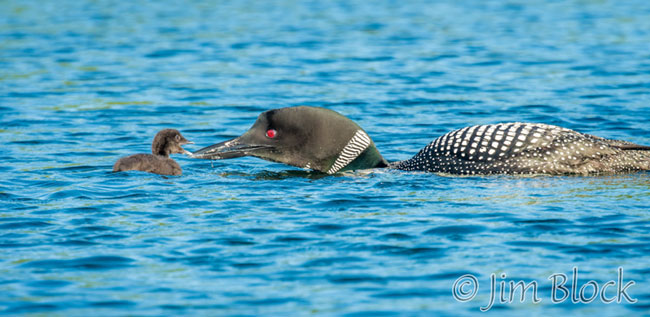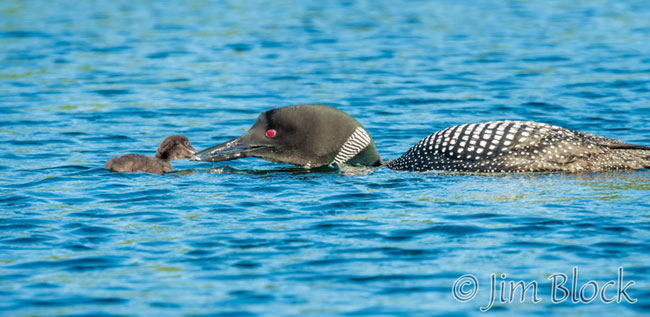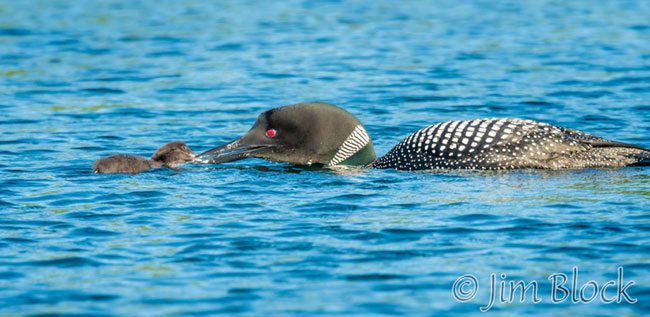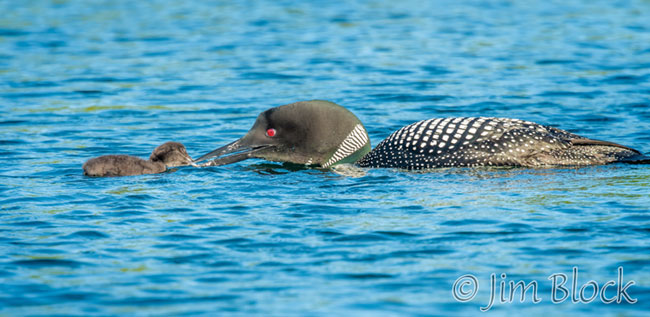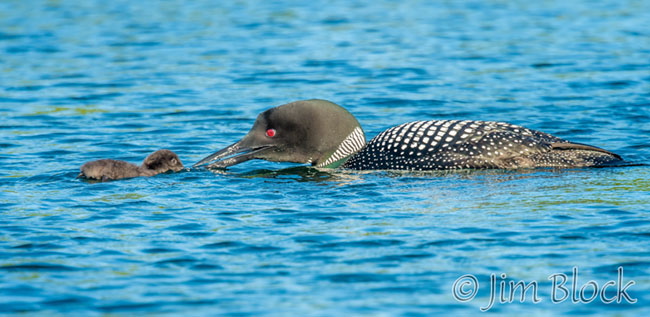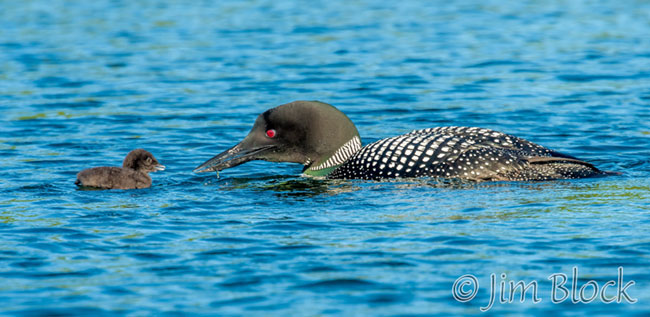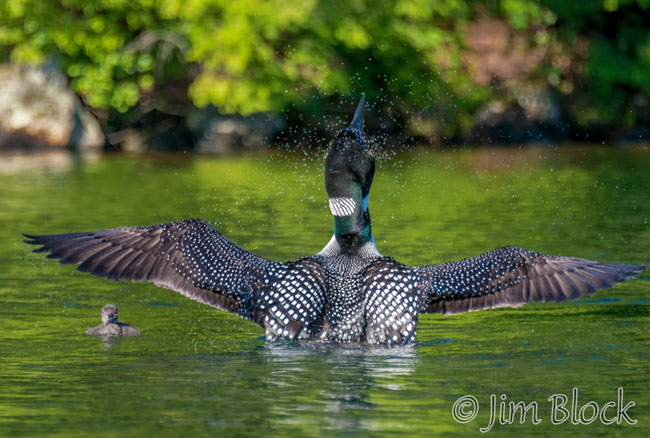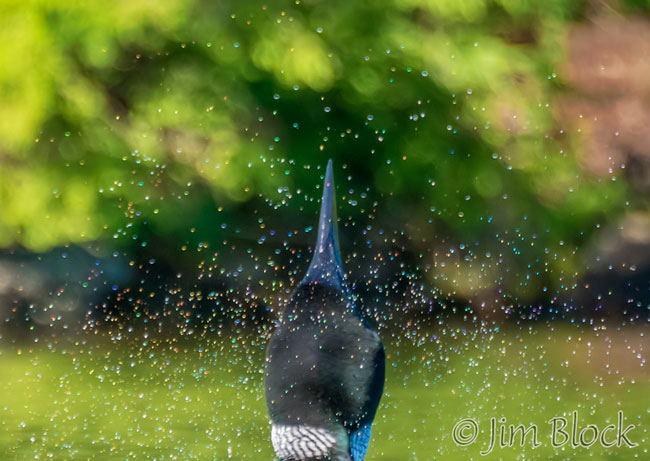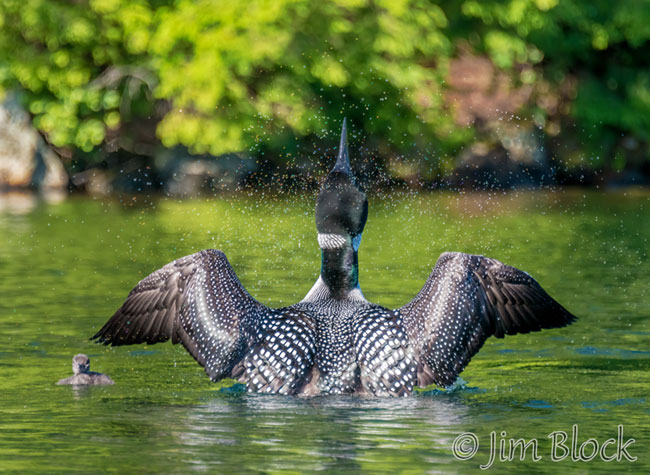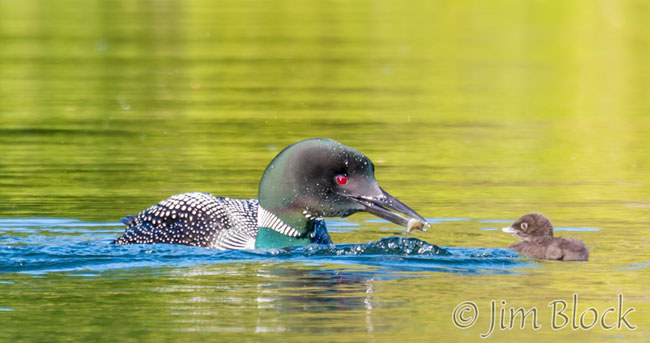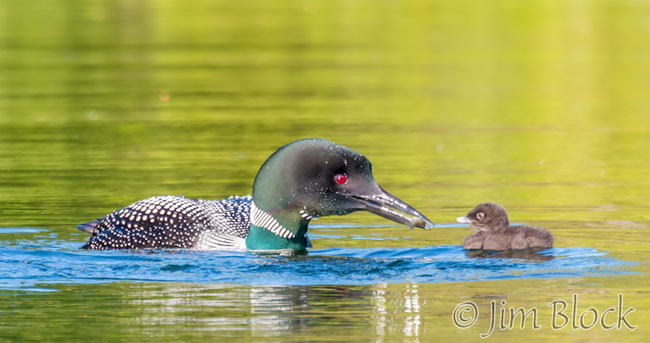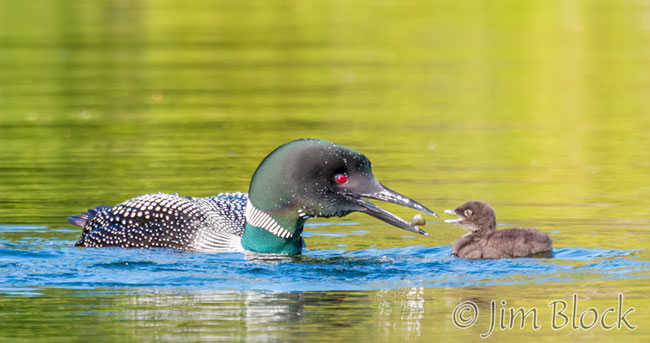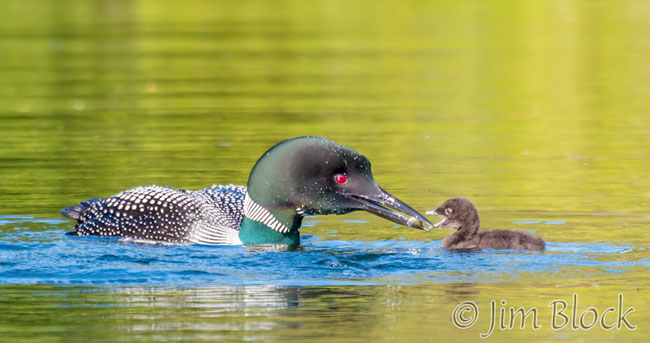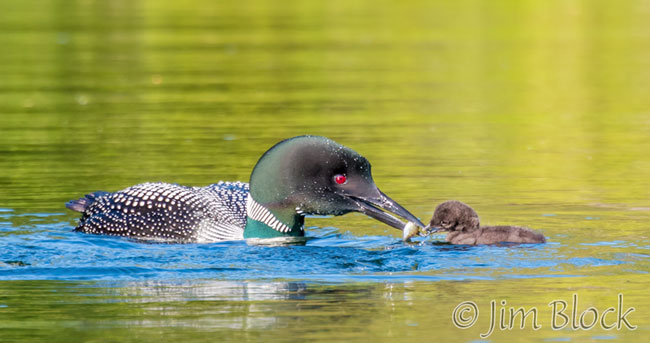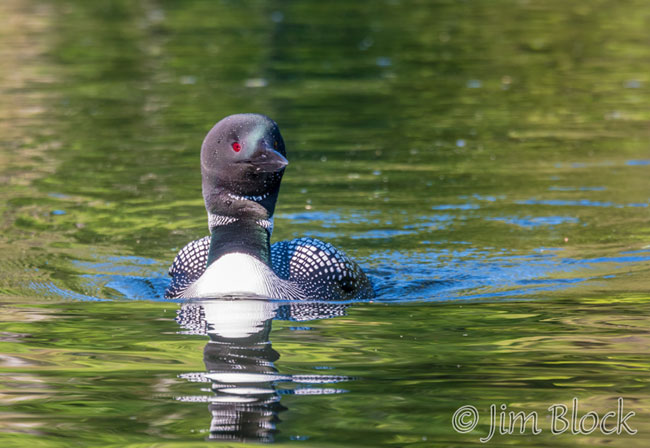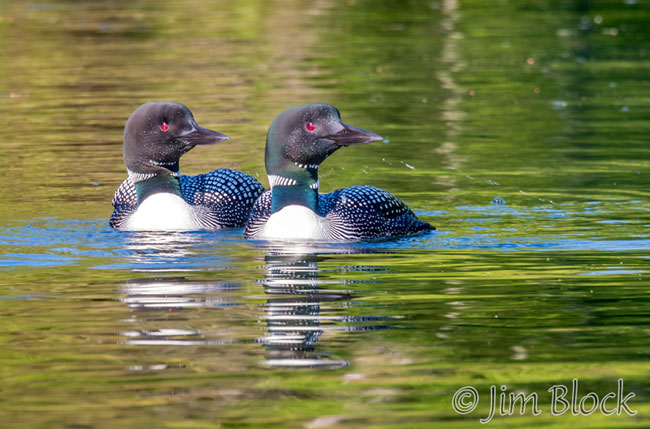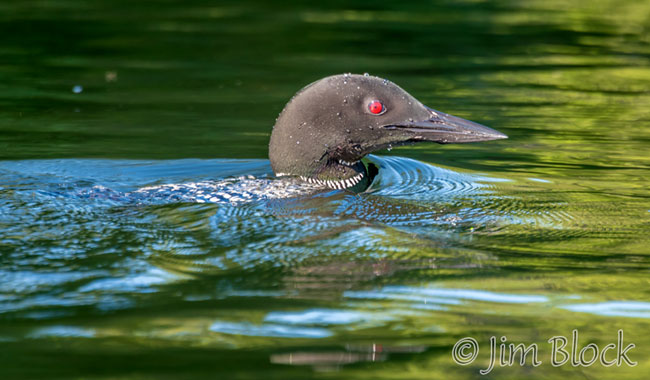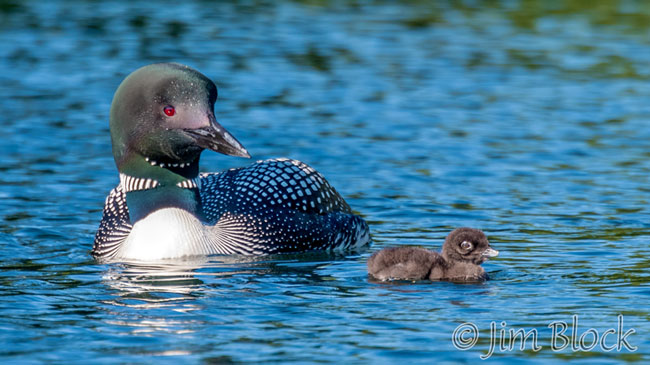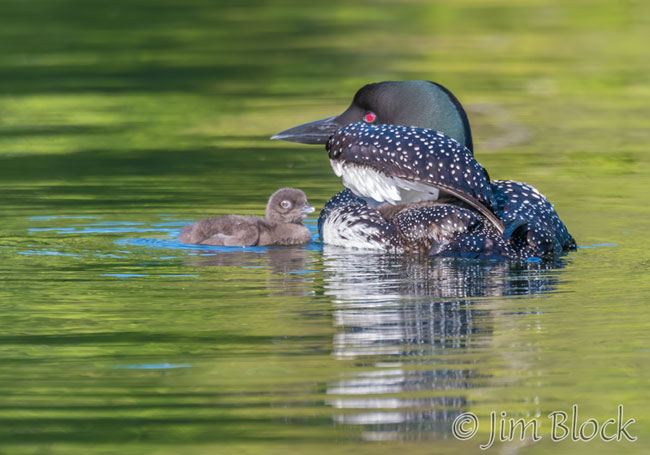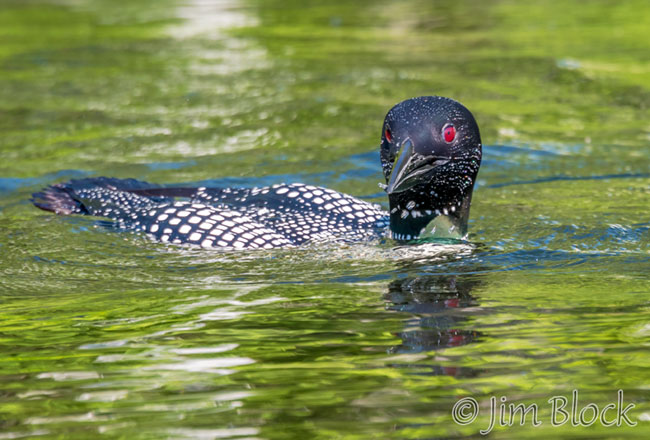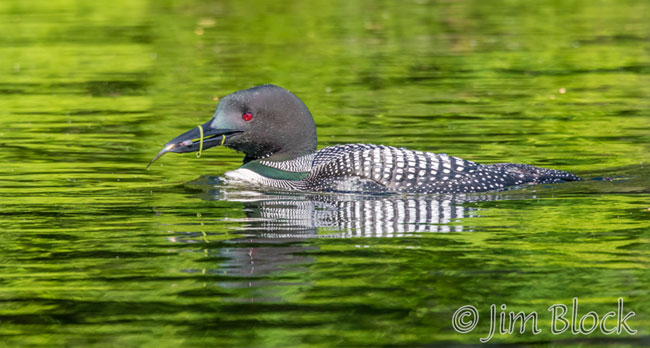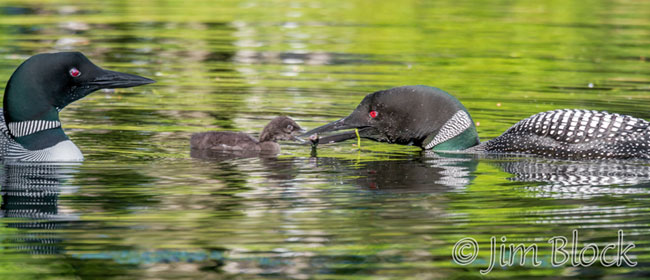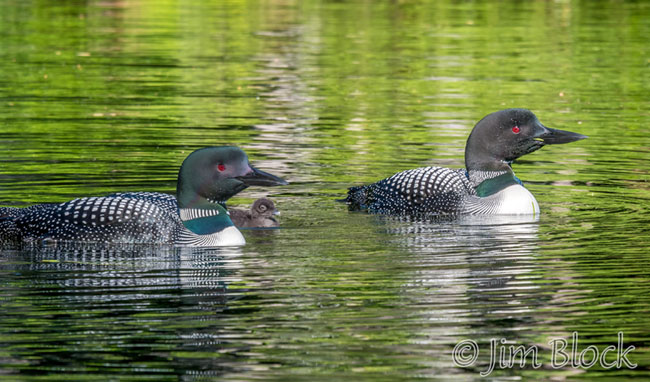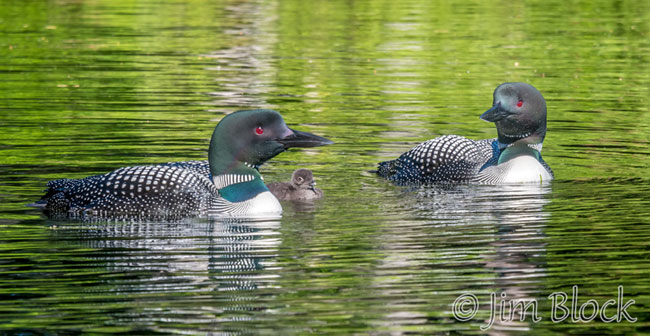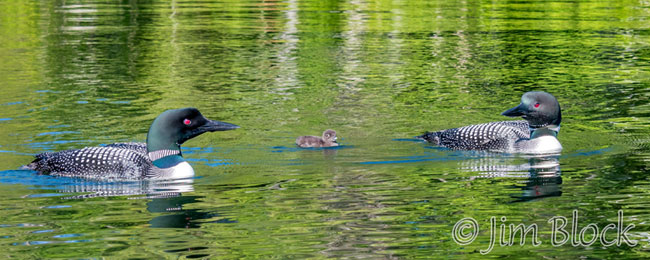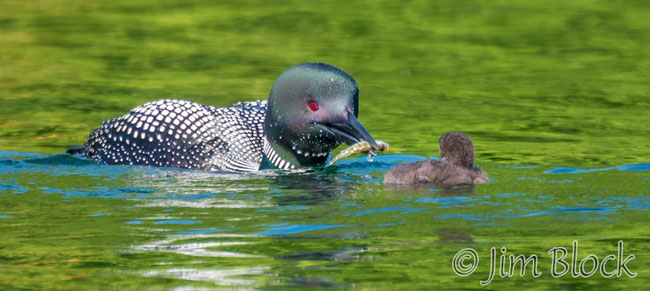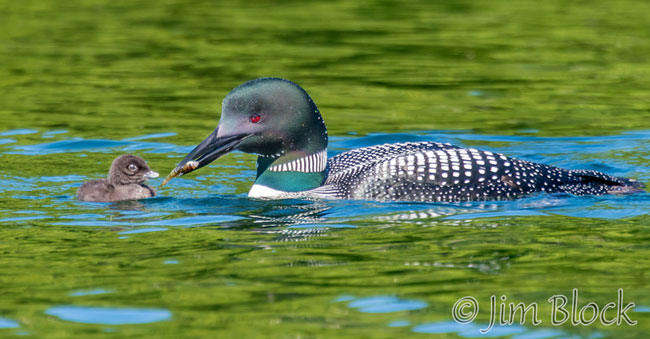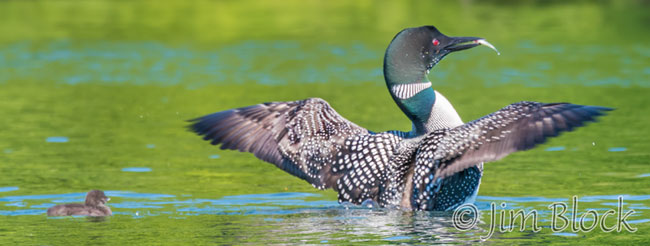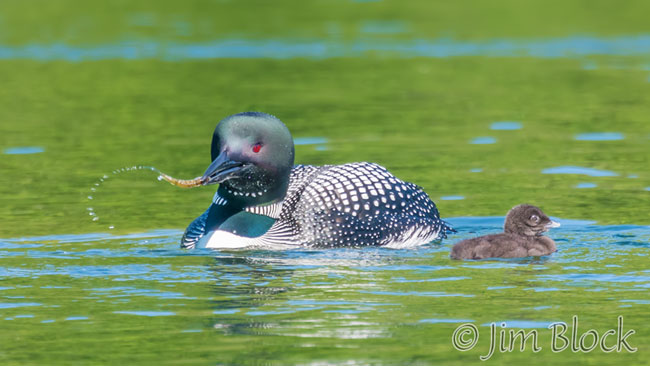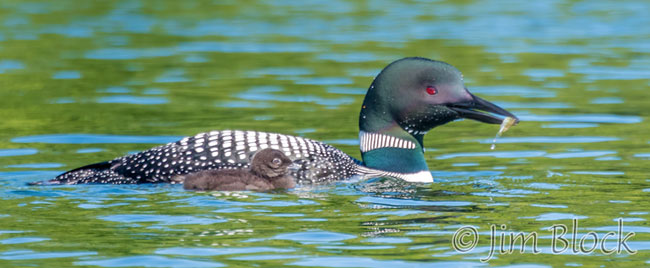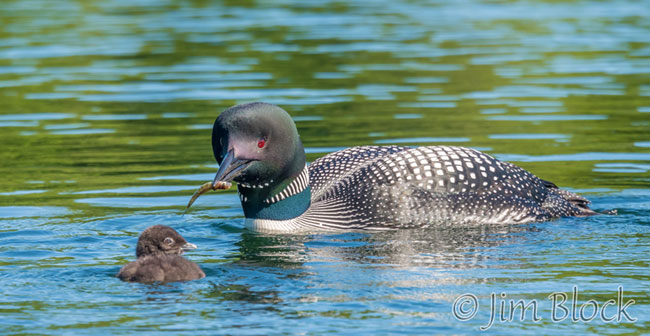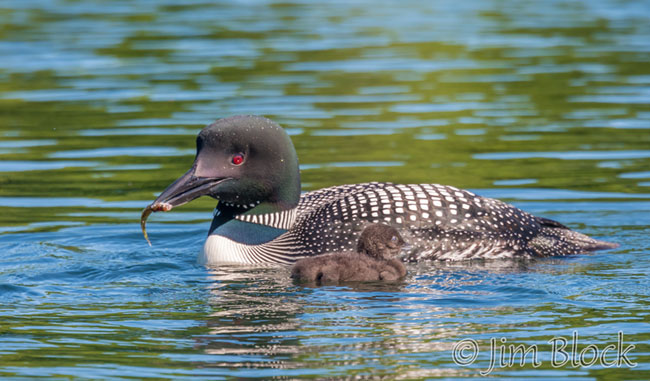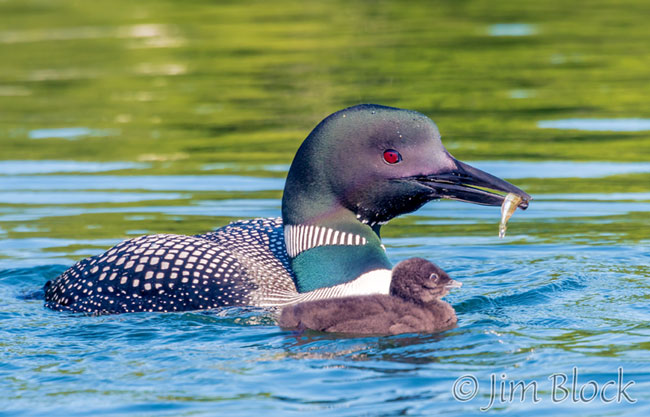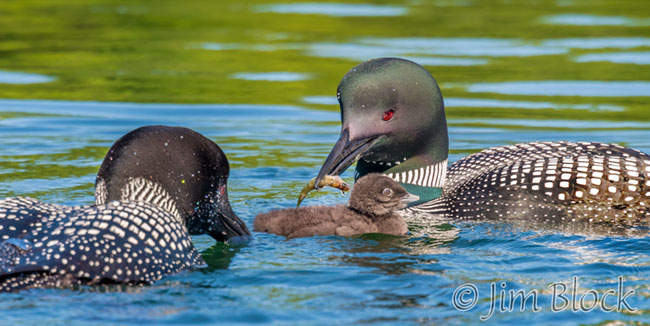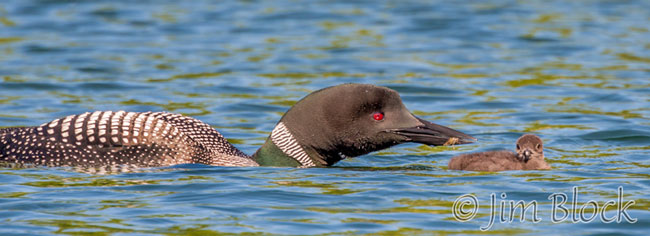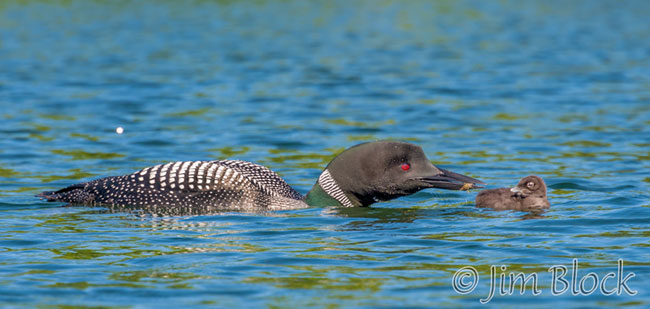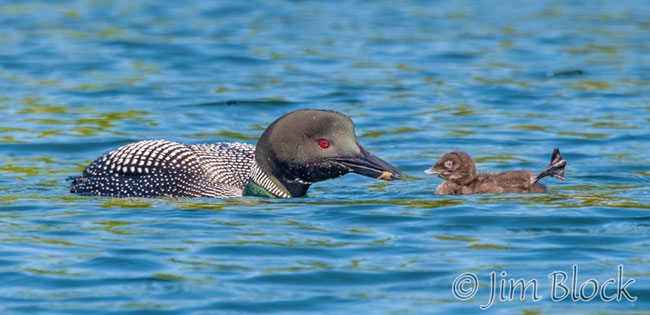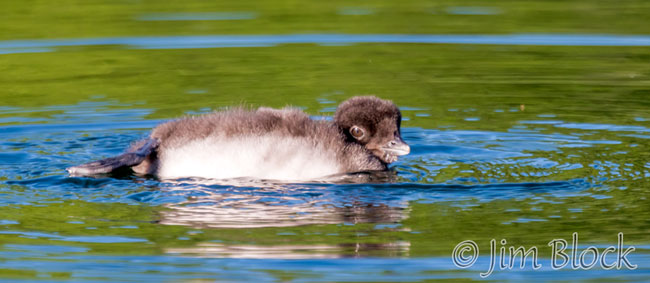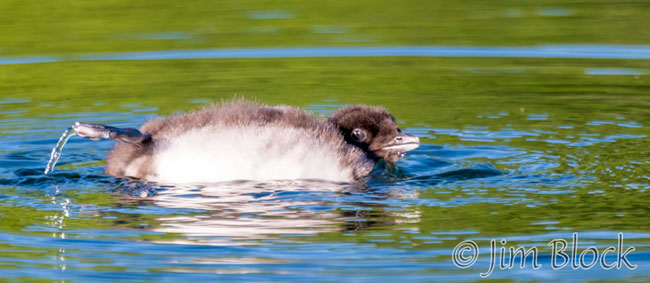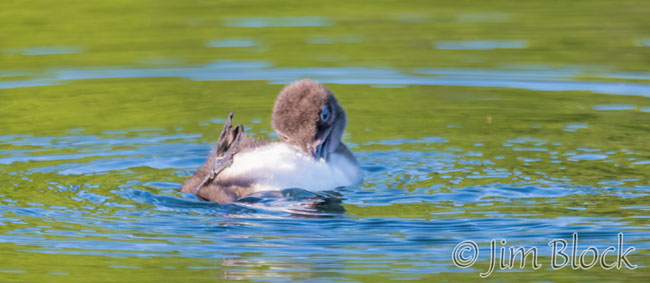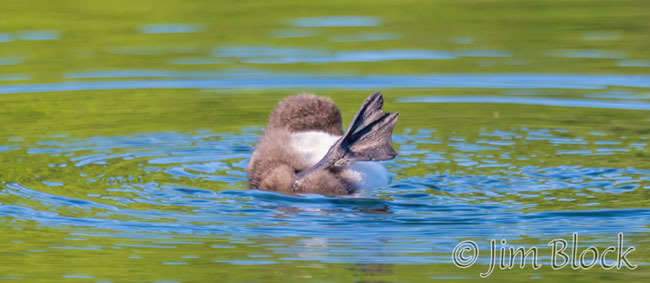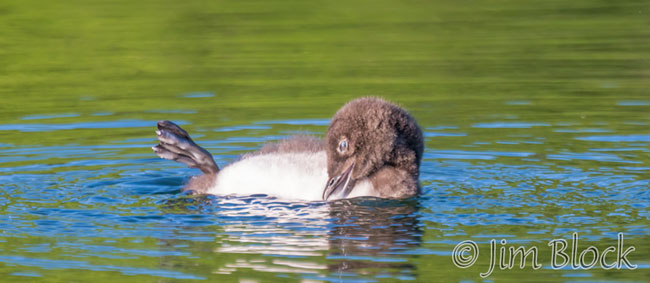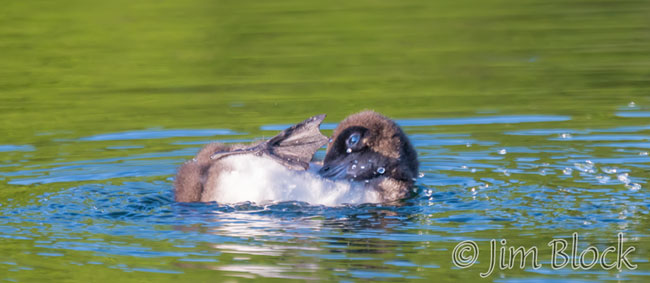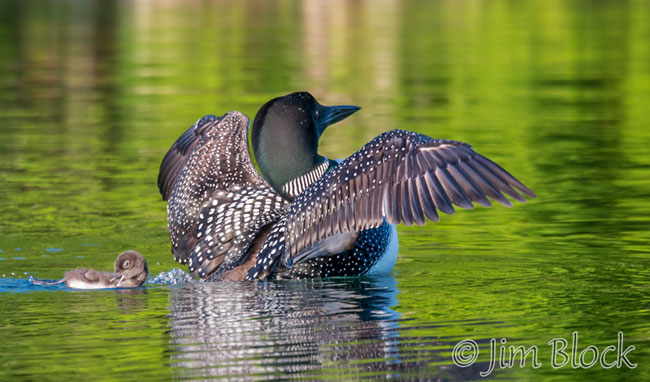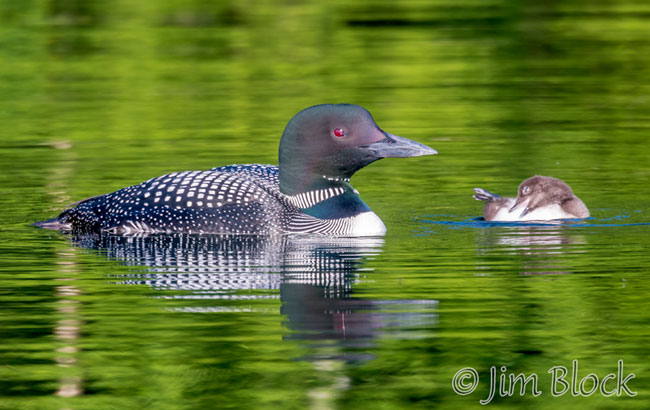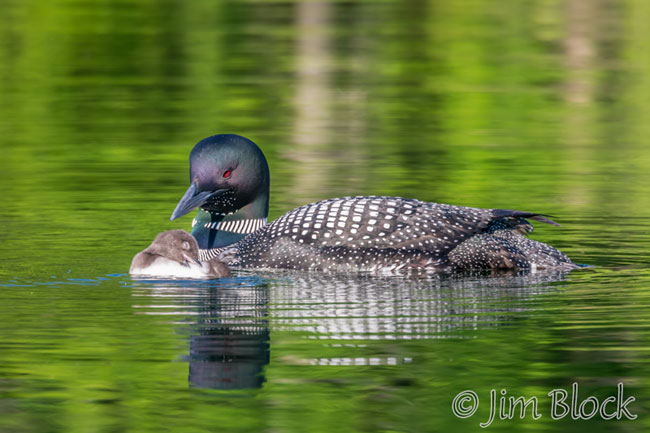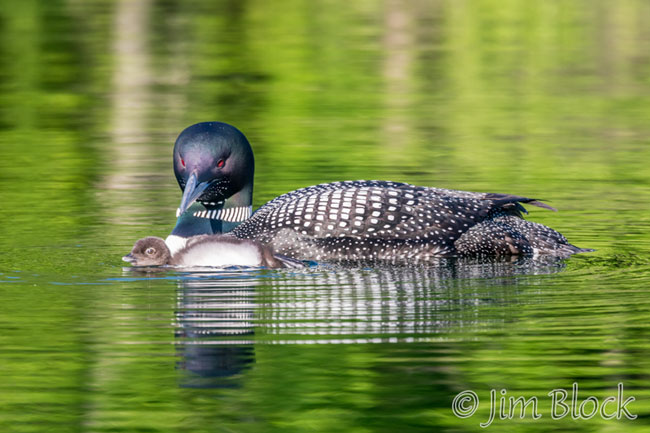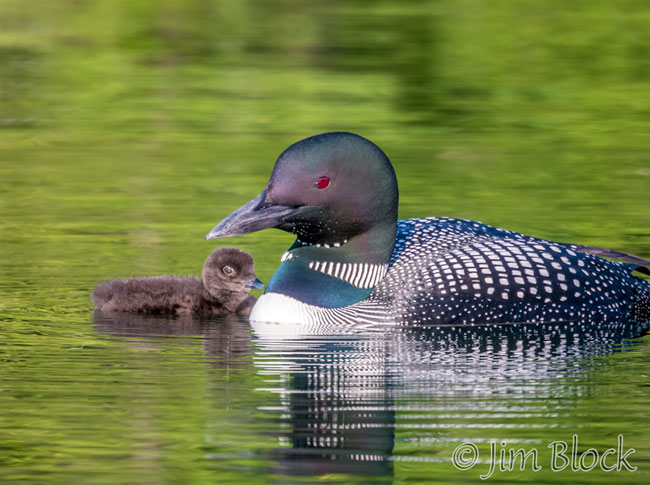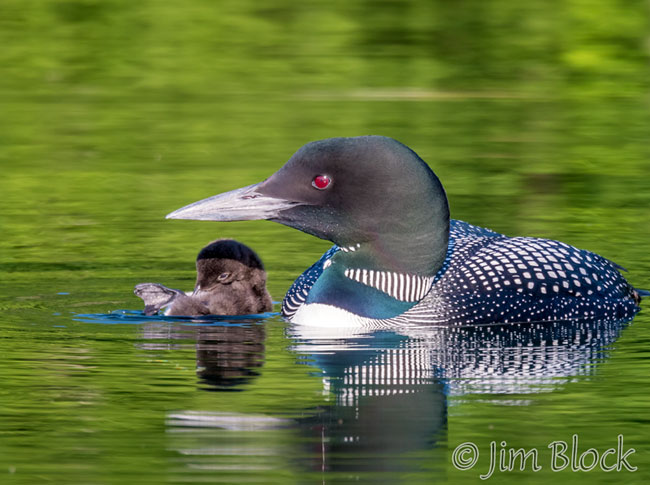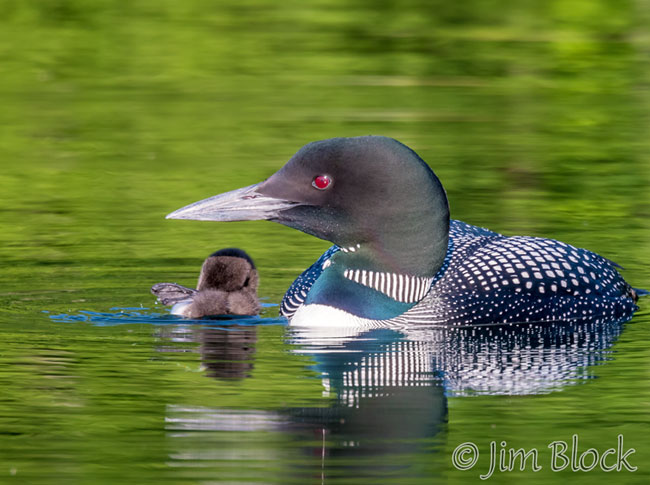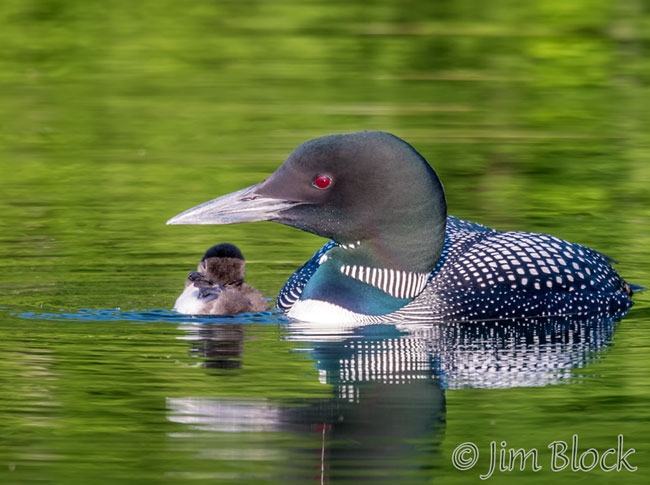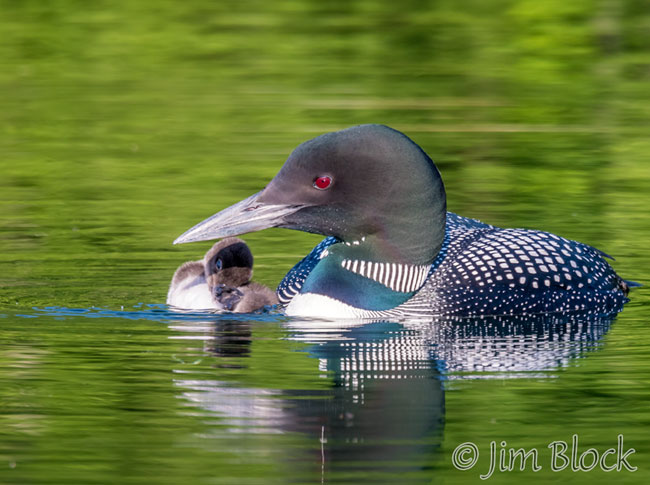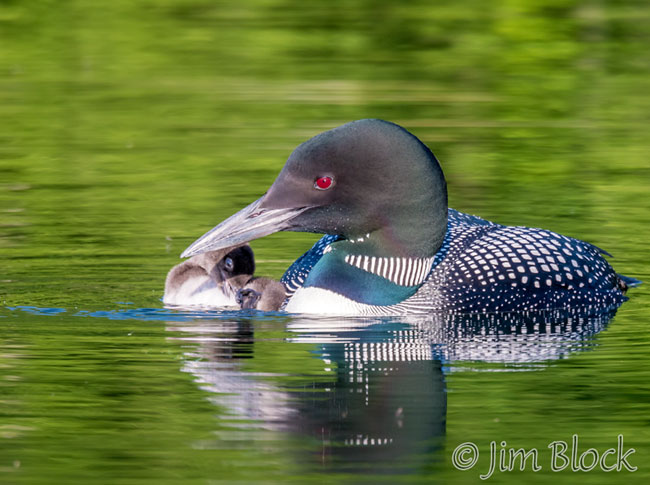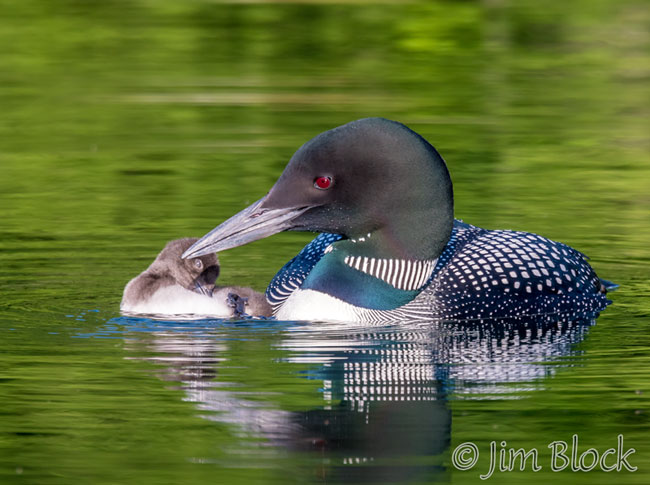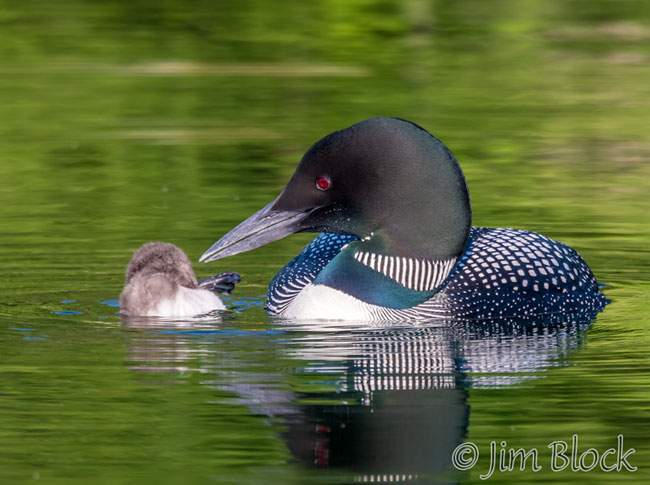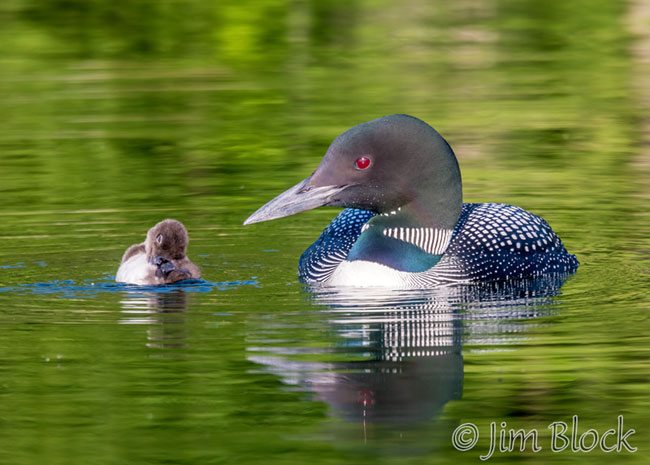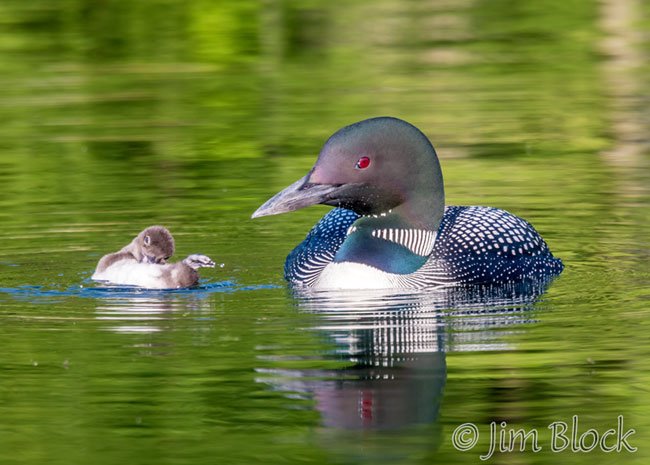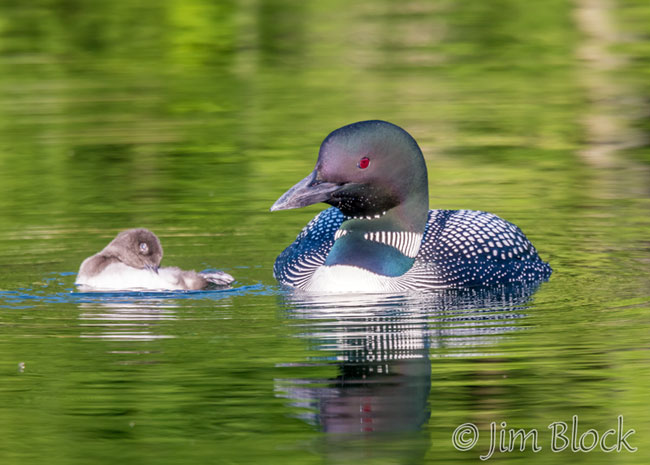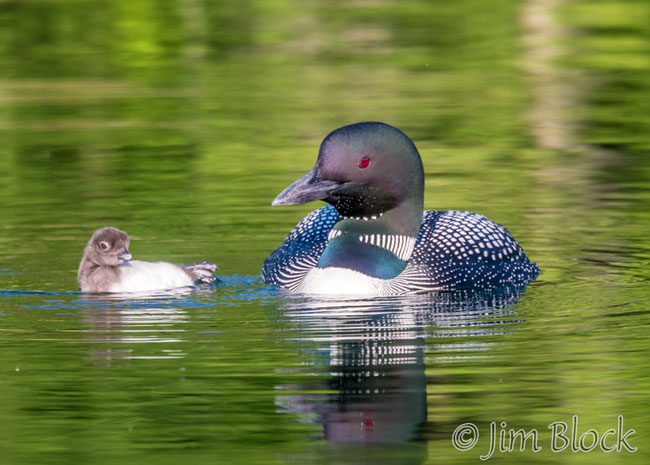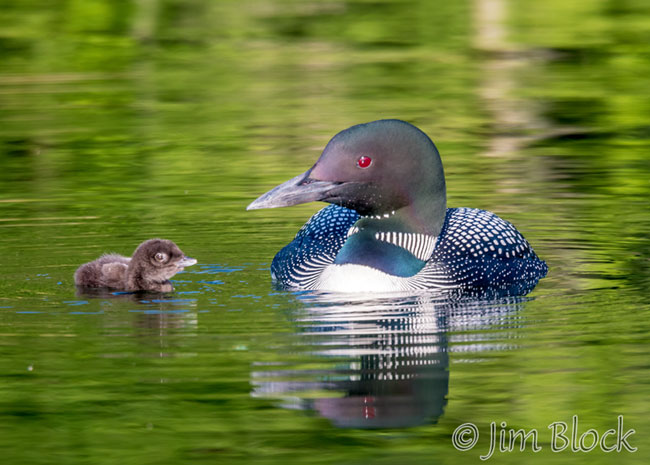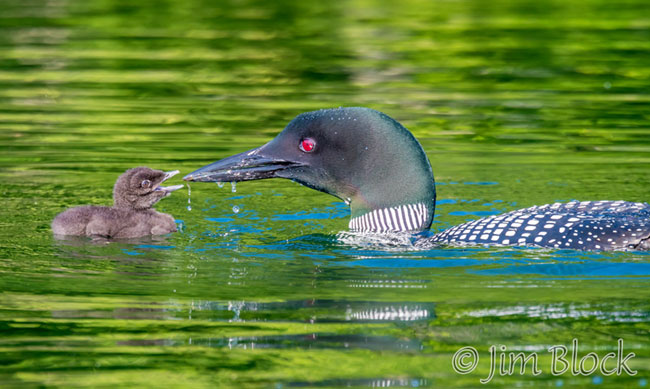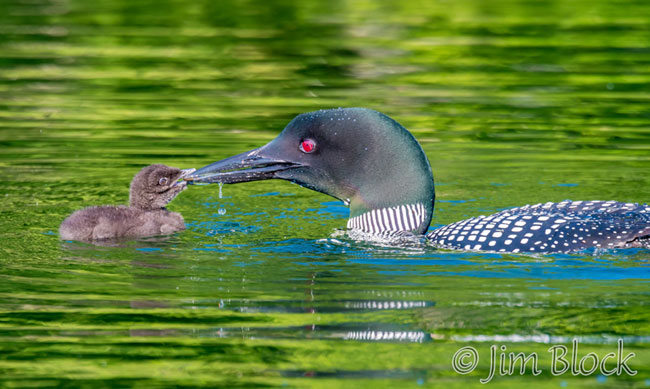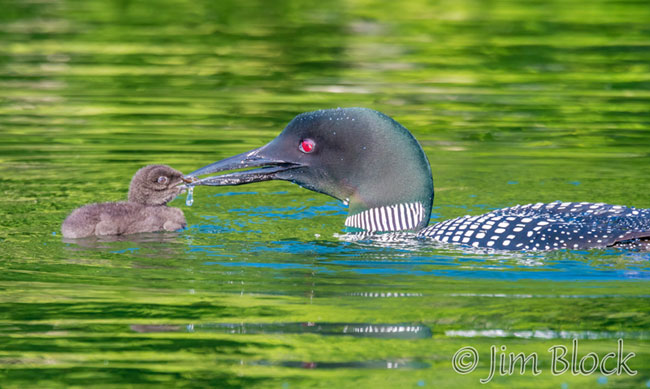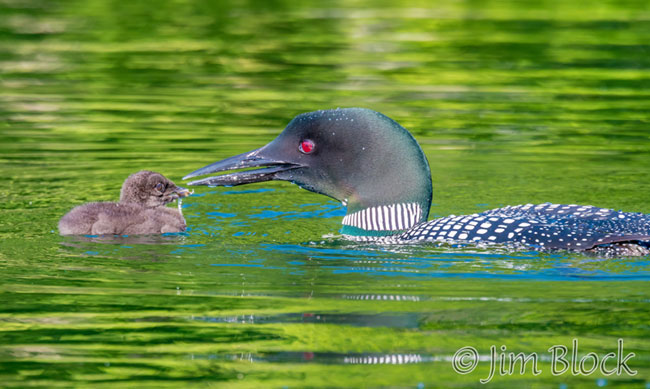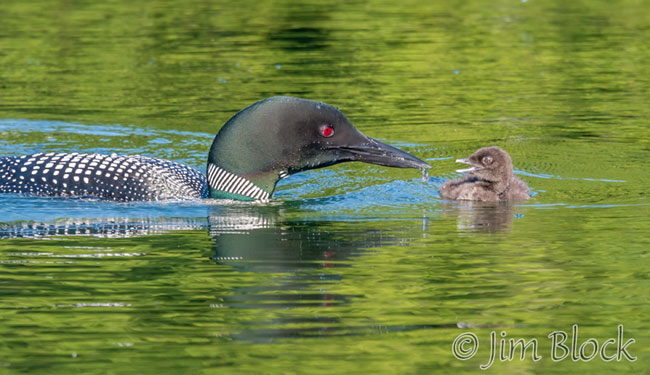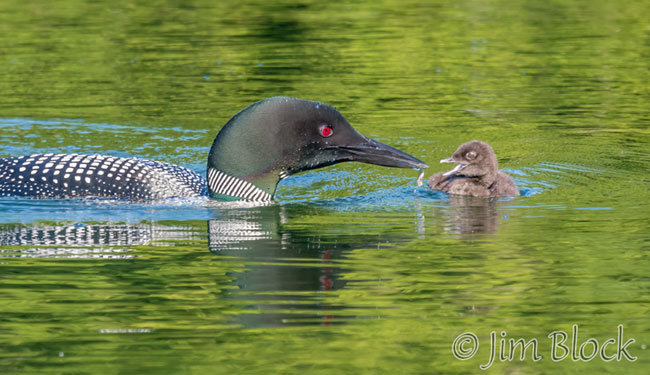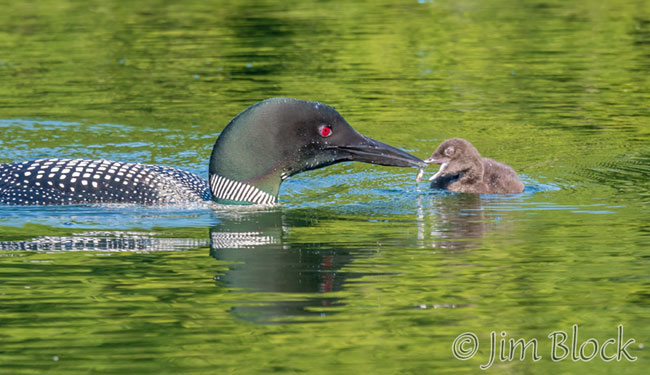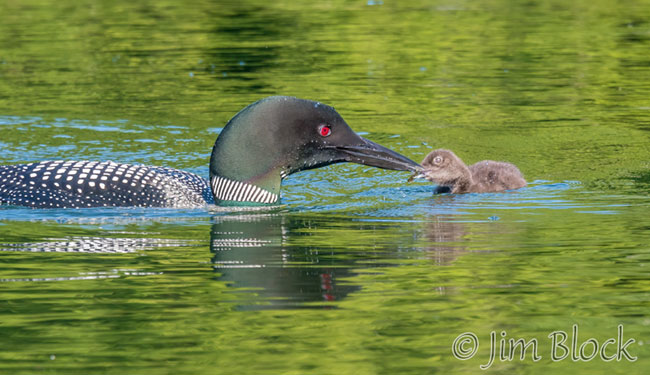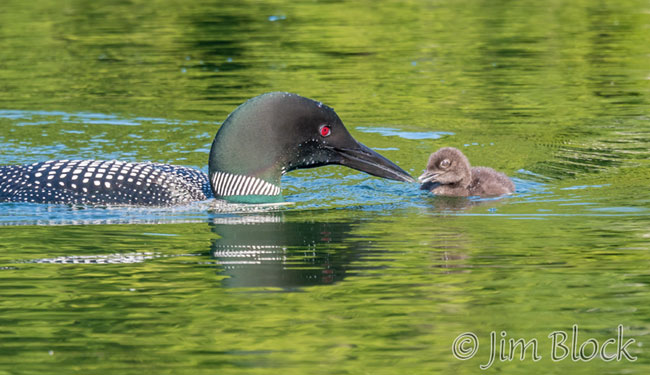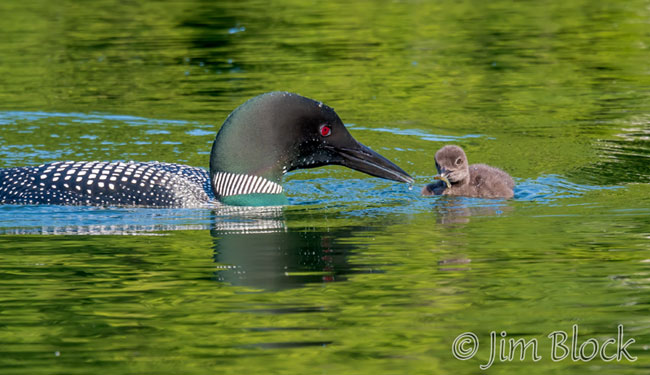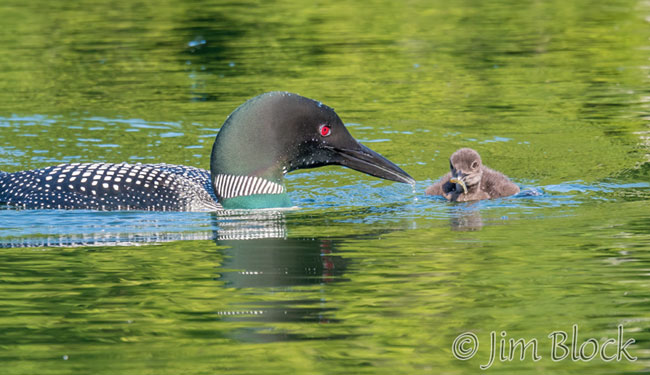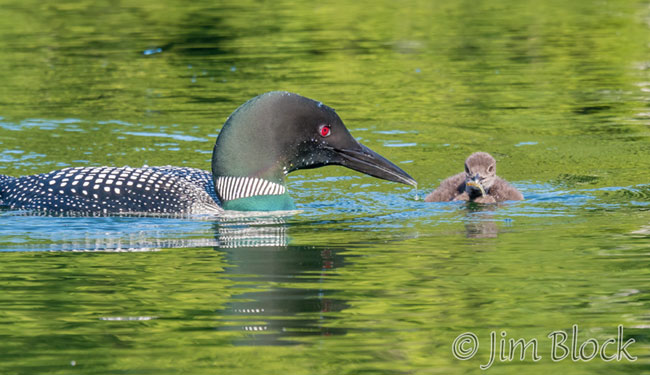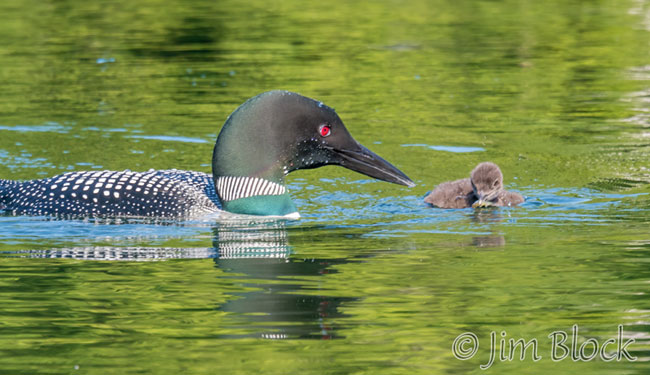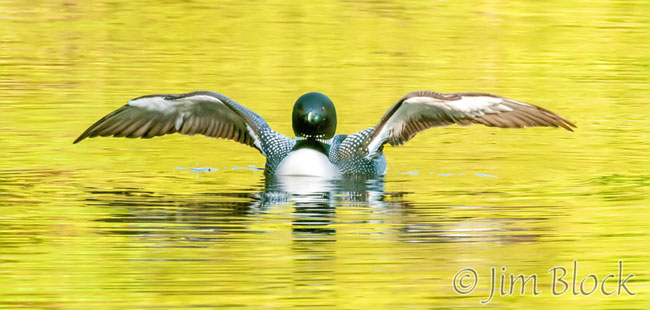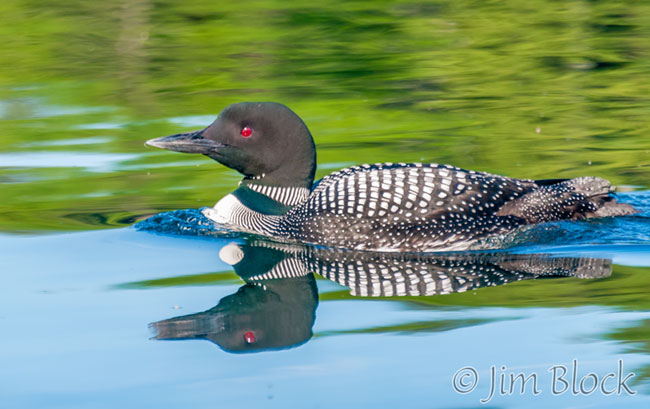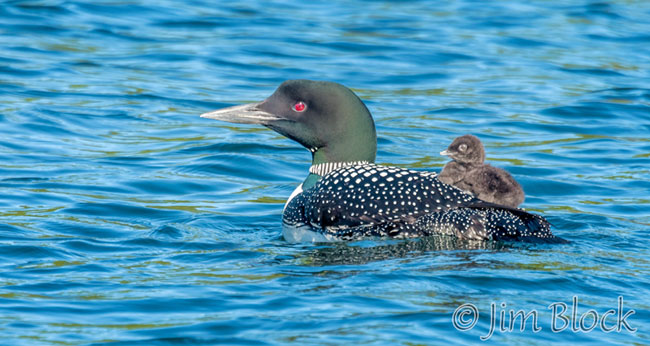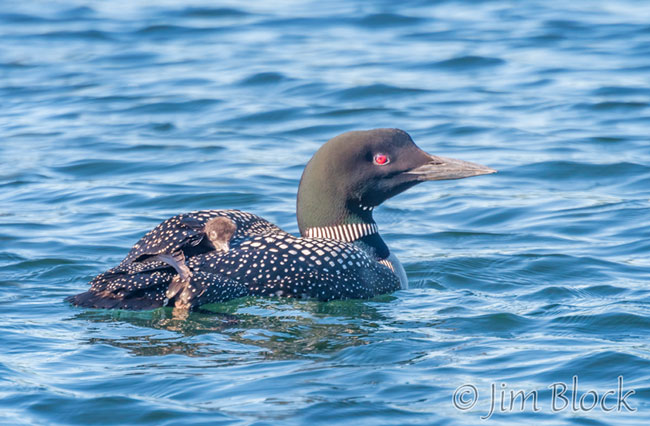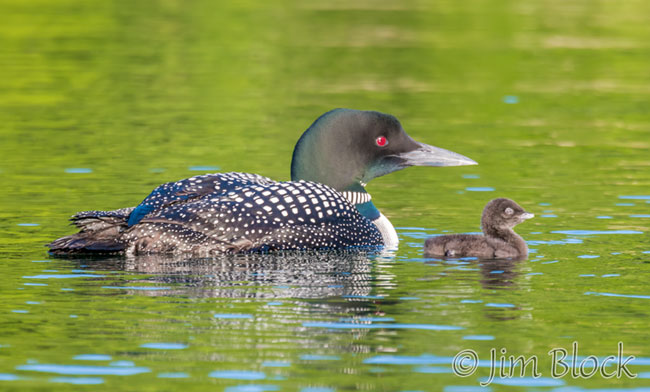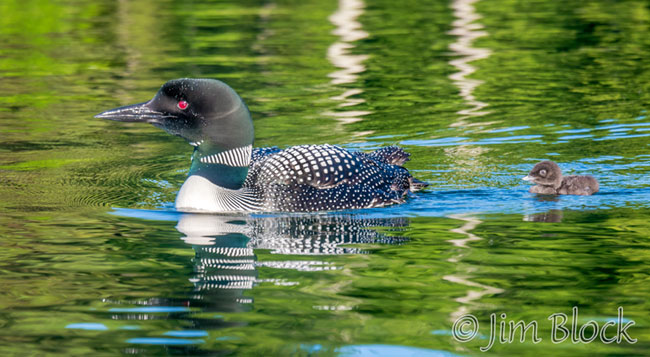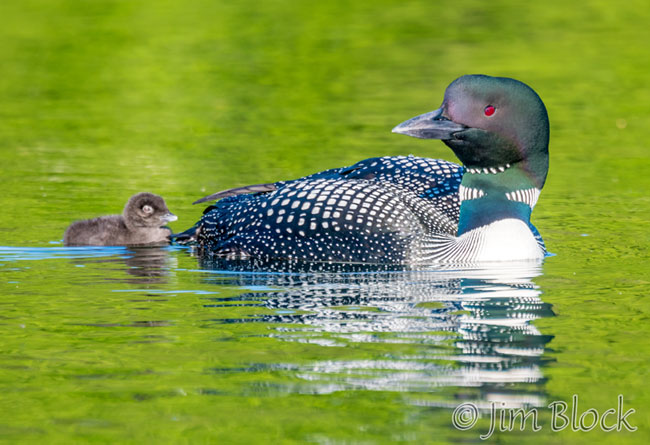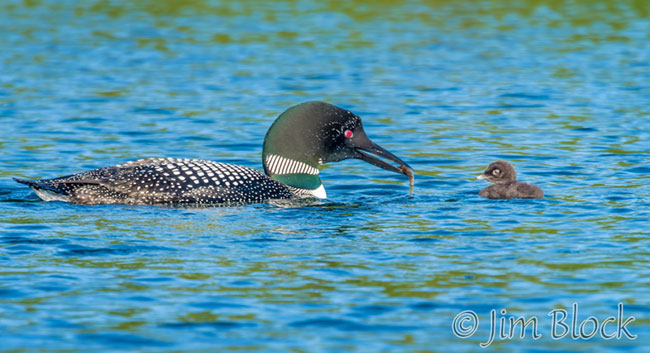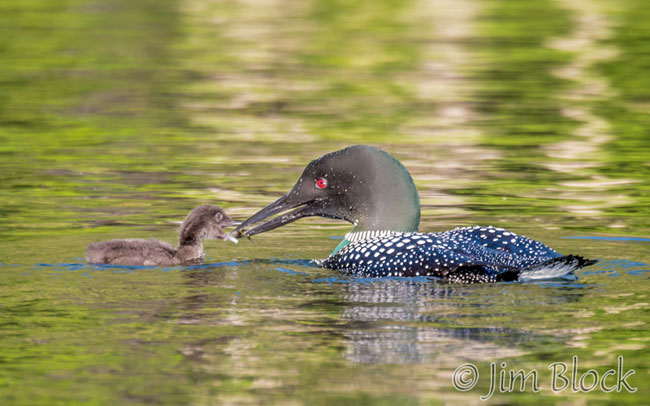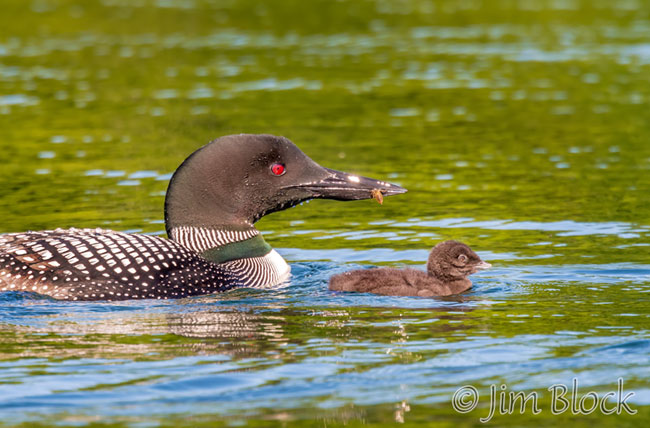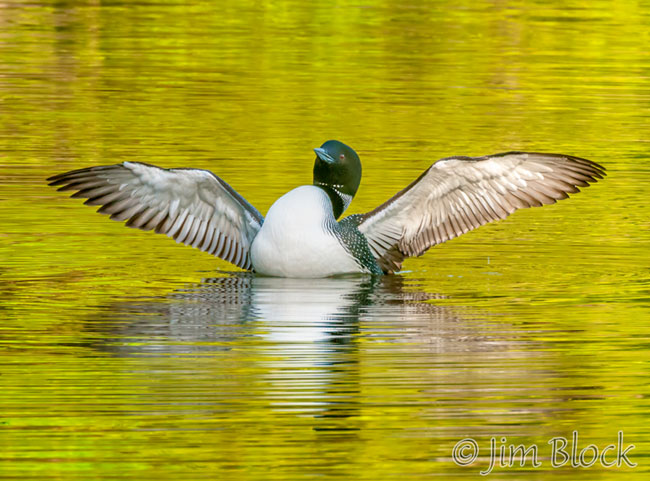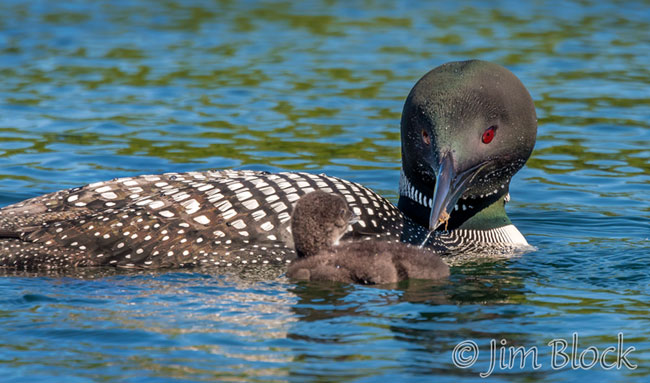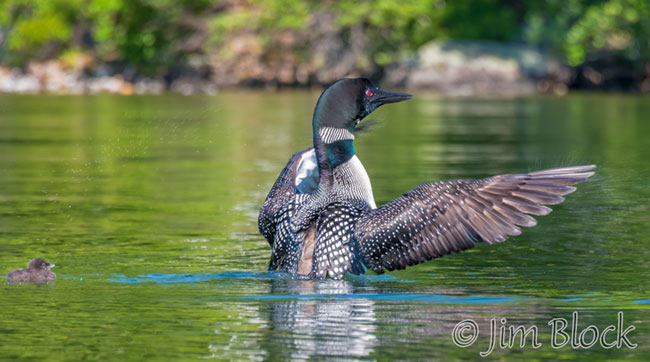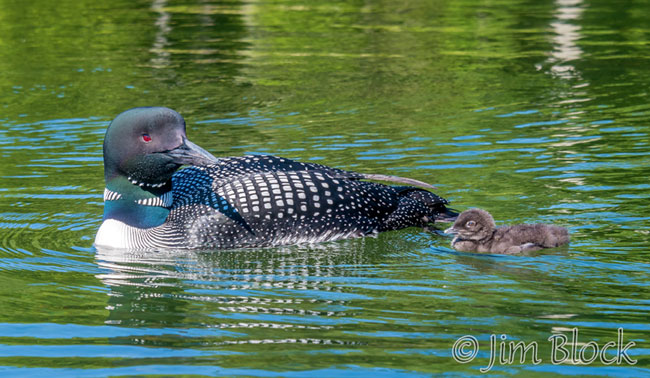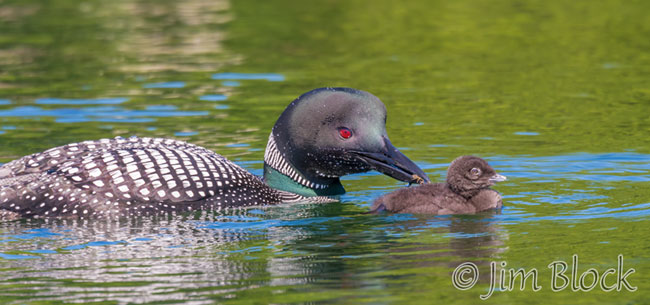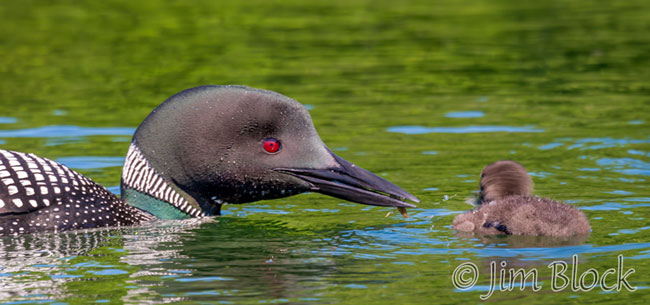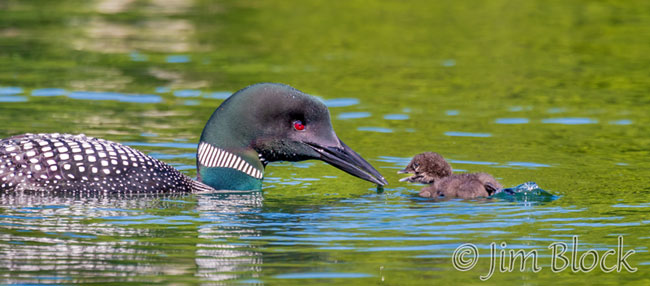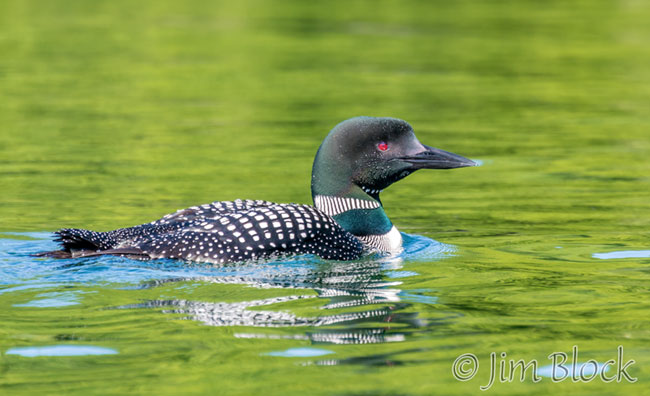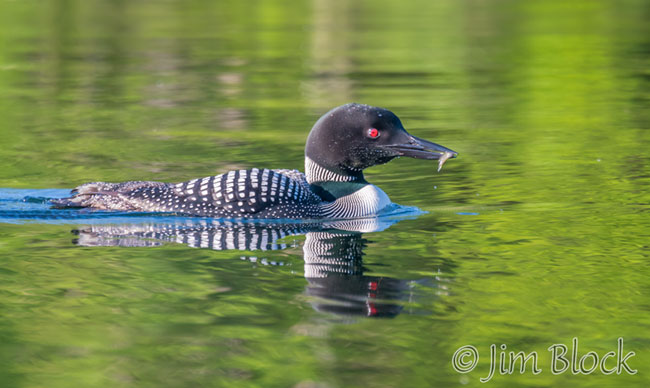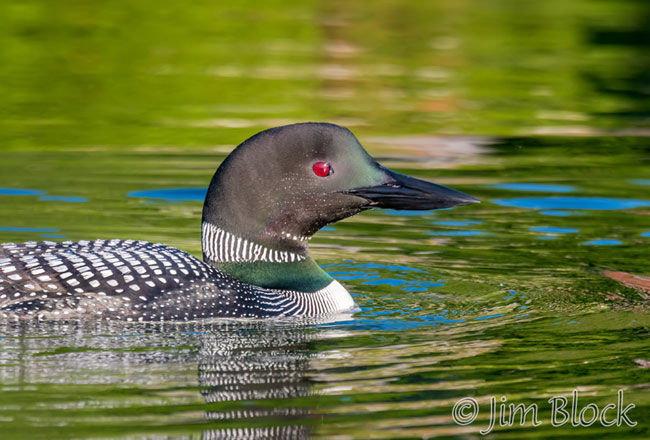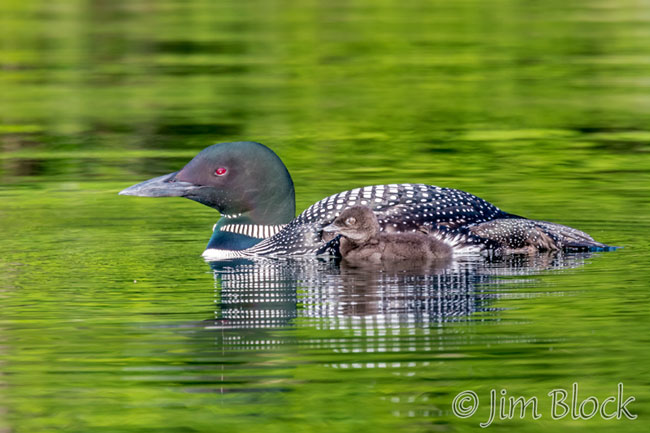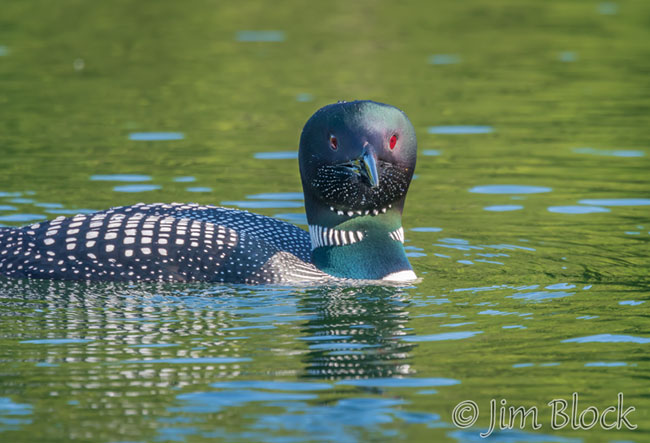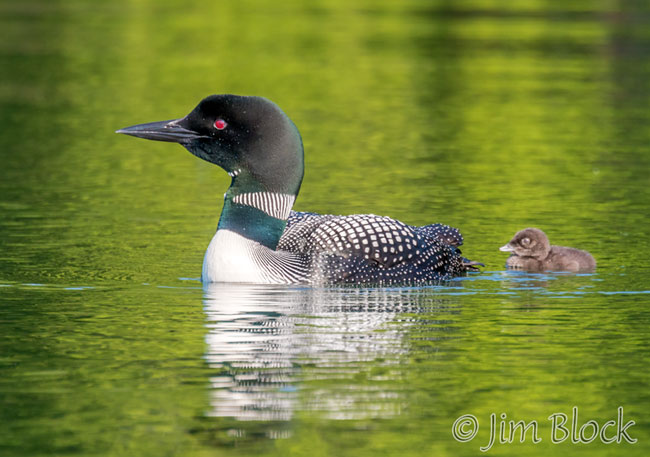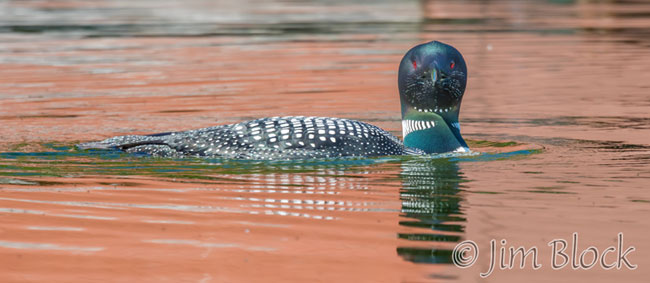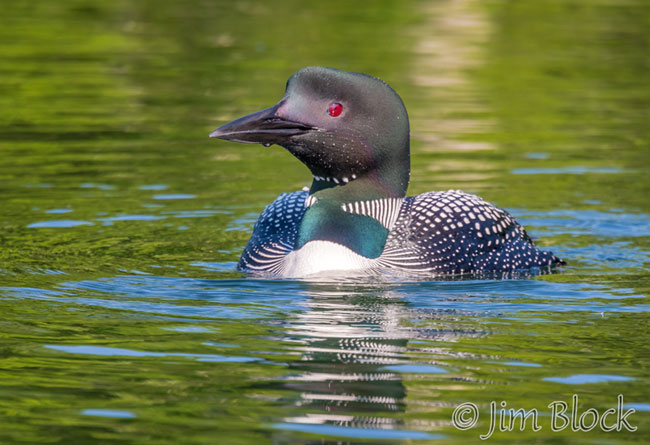I’m personally not a fan of naming wild creatures, but others feel differently. The third loon chick to hatch on Lake Sunapee quickly got the name “Penny” although no one knows if it is a he or a she. The chick hatched in a nest on a small rock outcropping near Penny Island on June 30. The photo below was taken on July 1 when Penny was less than a day old.
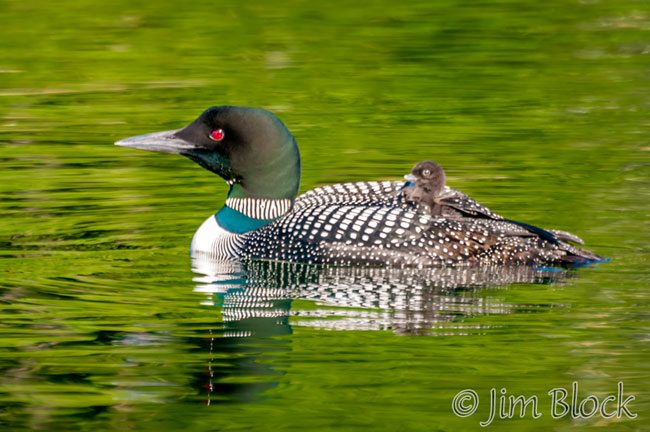
Last spring, for the first time in over 40 years, loon chicks hatched on Lake Sunapee. Their devoted parents nurtured and guided them through the dangers of predators and boat traffic to a successful late fall departure for the coast. You can see photos of these chicks during the first week of their lives HERE. A month later they entered their “ugly stage” of partial molt. You can see those photos HERE. You can read my story of the 2015 chicks and see photos in the summer 2016 issue of Kearsarge magazine.
This year the pair — presumably the same two — returned and were observed mating on May 5 on the artificial raft they used the previous year. They started incubating two eggs, then something happened and they abandoned the eggs. One theory is a second male entered the picture and chased the other male away, but we will likely never know. These loons are not banded. The eggs were eventually removed by the Loon Preservation Committee.
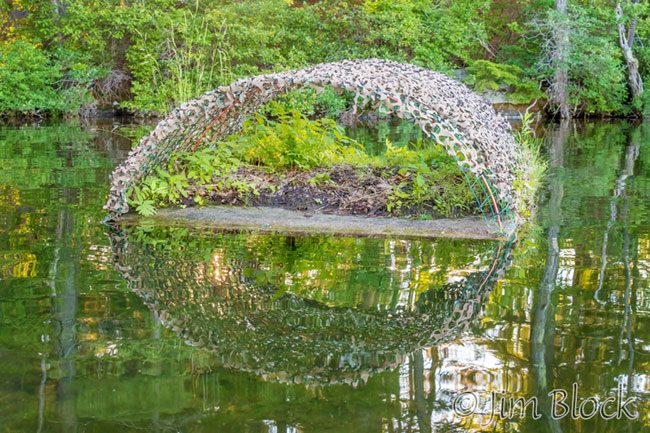
On June 20 Kristen Begor, President of the LSPA, came to remove the buoy lines keeping people away from the raft. She found a loon on a nest that was used unsuccessfully in 2014 not far from the raft. So she left the lines in place. Ten days later the chick emerged from its egg and entered the water.
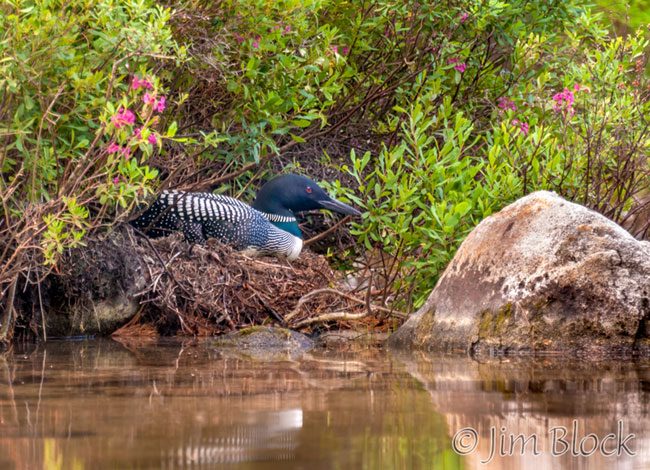
Day 1
My first inkling that a chick had hatched came the next morning, July 1, as I entered the harbor. There I met one of the parents heading out to the main lake to feed.
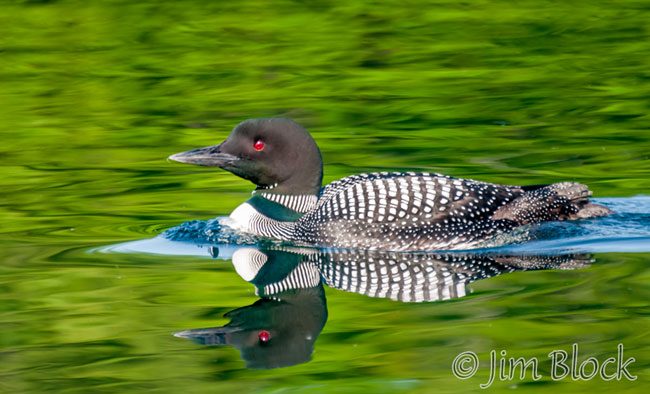
A few minutes later I spotted the other parent with the chick.
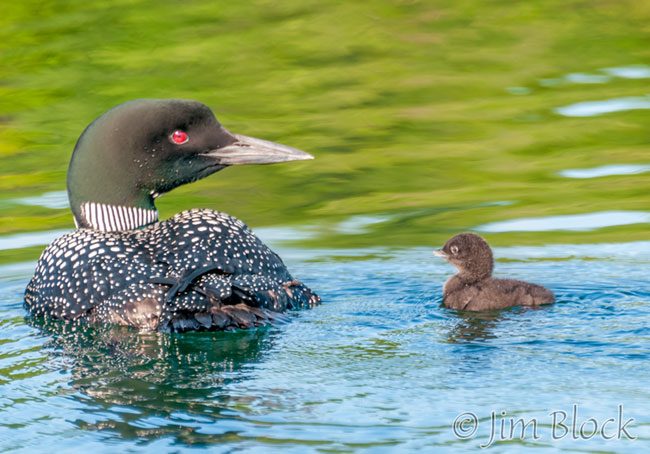
I photographed quickly from a distance with a long lens. I stayed with the pair for just over one minute as the background reflections changed dramatically in the harbor. The photos below were taken in a span of 62 seconds.
Day 3
This was a second very short visit with the young chick. I stayed with the loons for less than 90 seconds.
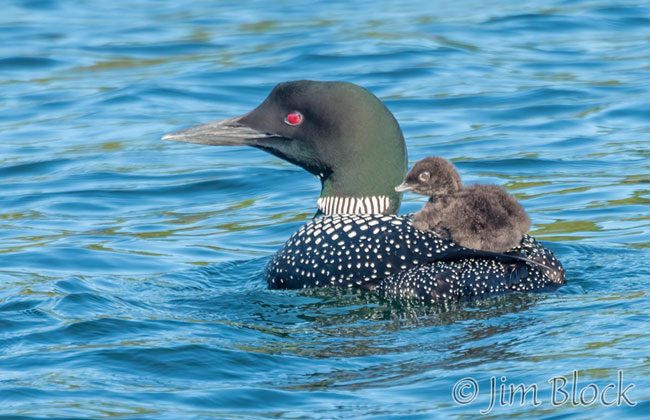
I was able to capture an interesting sequence of the chick climbing on the parents back under a raised wing and then emerging out the other side. The time span between the first and last photo in the set below was 9 seconds.
Day 4
I spent considerably longer with the loons the early morning of July 4th. When I first found them, both parents were feeding the chick. Here is a sequence.
Shortly after that one parent headed out to the big lake to fish and the chick climbed aboard the other parent to snooze.
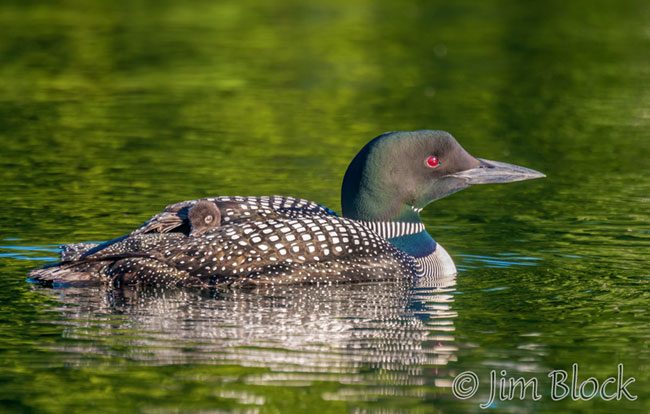
Nothing much happened for a long while. I paddled some distance away quietly observing. Most of the time the chick was in the water and was infrequently fed.
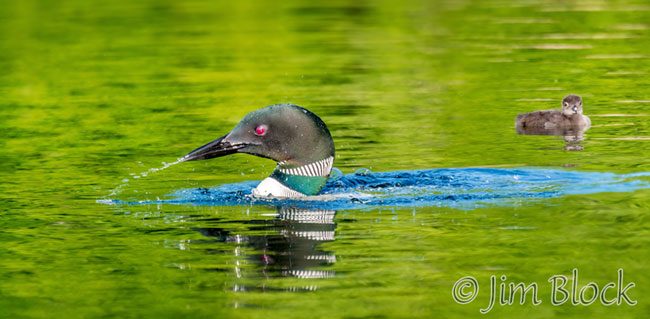
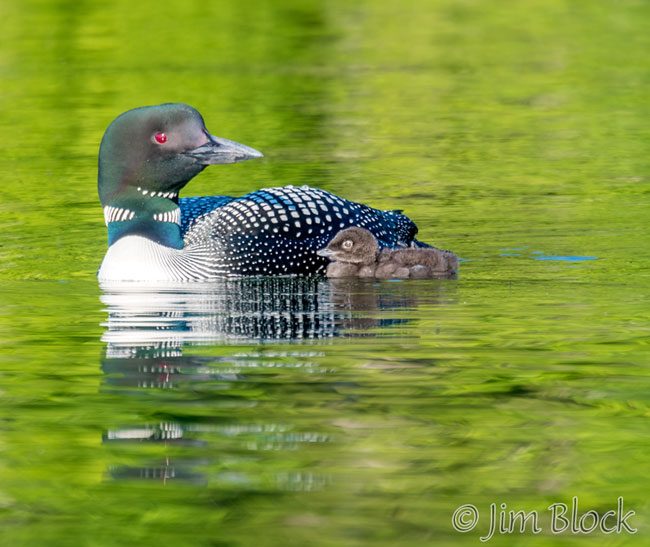
About an hour after it left, the other parent returned. When it did it seemed to get into a minor dispute with its mate, perhaps about it being gone too long.
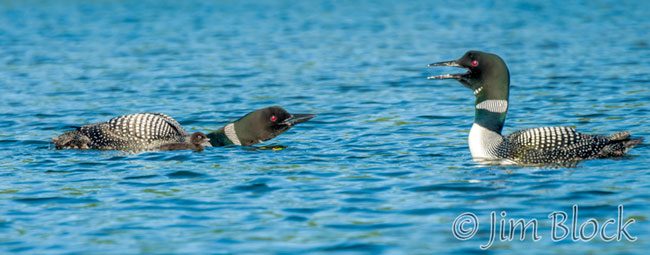
They both fed the chick. The chick had not yet mastered the art of not biting the beak that fed it.
A parent shook violently with a chick nearby. One photo of this sequence is a cropped version where you might be able to see the many colors in the reflections in the water droplets.
The chick made its own attempt at stretching and shaking.
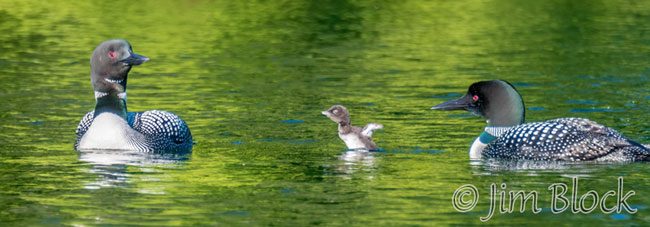
Over the next 20 minutes there was more fishing and feeding.
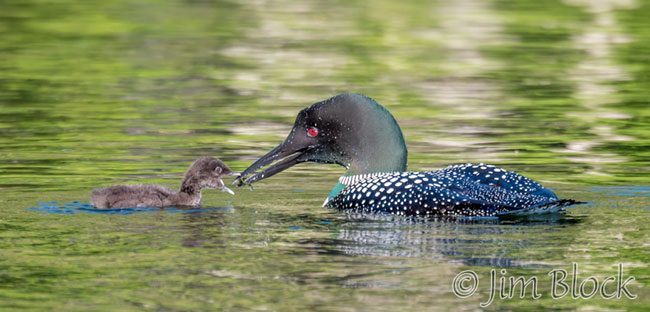
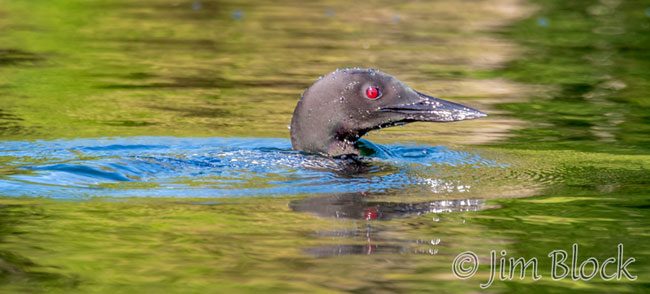
Here is a feeding sequence.
And then there was preening.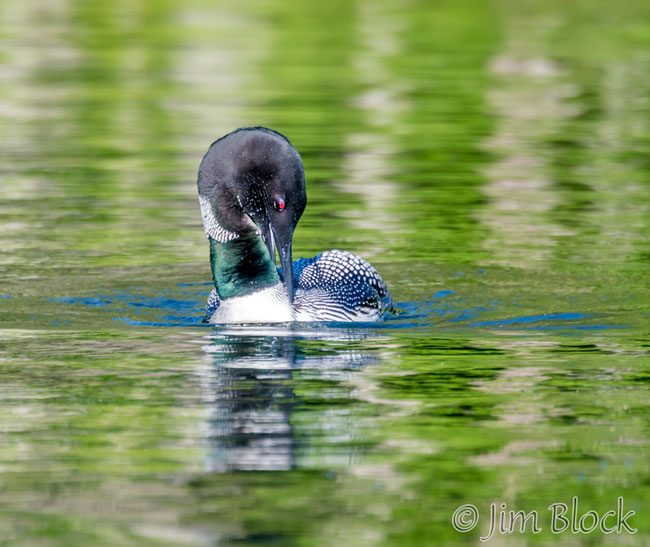
Often when one loon returns from feeding in the big lake the second parent departs almost immediately. But this morning both parents stayed with the chick while I was present.
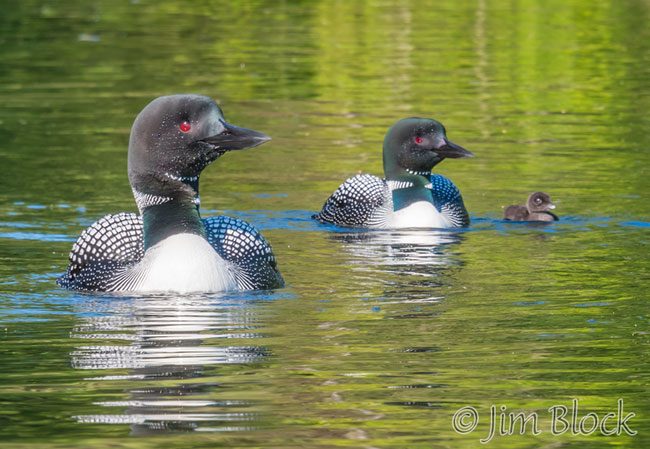
Here is a slide show taken over an almost 30 minute period.
Below are some photos taken during a two minute period.
After a while the chick got full and refused to eat more. Here is a series of photos where the parents try unsuccessfully to get the chick to take a delicious-looking fish.
I watched the chick repeatedly refuse crayfish. When you are full, you are full.
Day 5
I spent all of one minute with the loons late in the afternoon of July 5. The chick was floating but had its head tucked safely under its parents wing — sleeping no doubt.
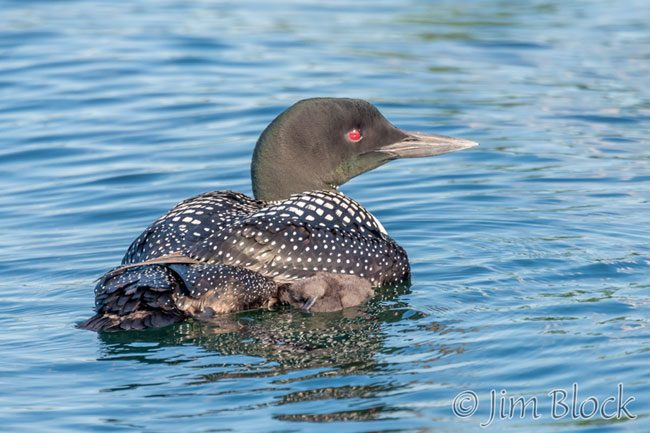
Day 6
On July 6 there was never more than one parent with the chick at a time, except for a quick one minute exchange of babysitting duties. I only have one photo to show you from the morning that has both parents present.
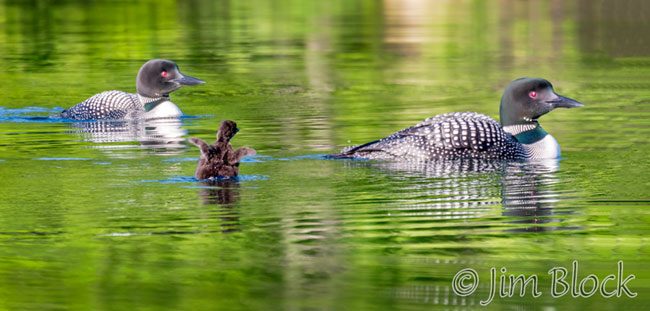
The chick seemed to spend most of this morning preening.
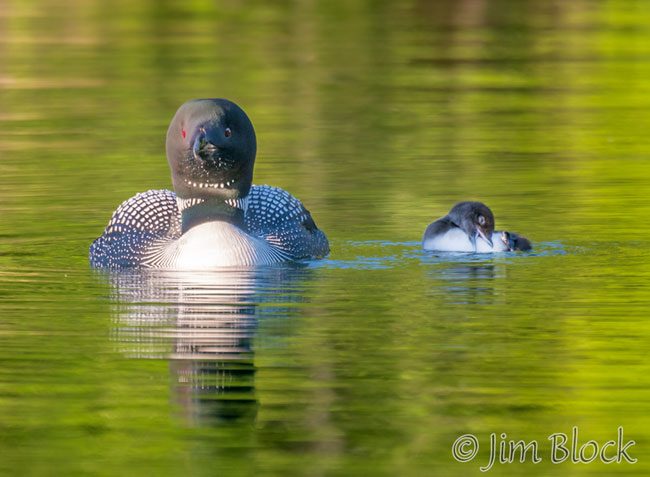
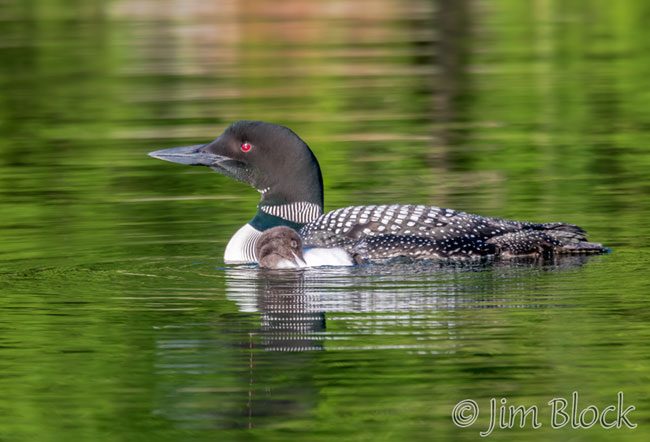
It was neat watching the chick preen — it would spin like a top making a full revolution in 2-3 seconds. Here is one such spin.
There was some feeding going on…
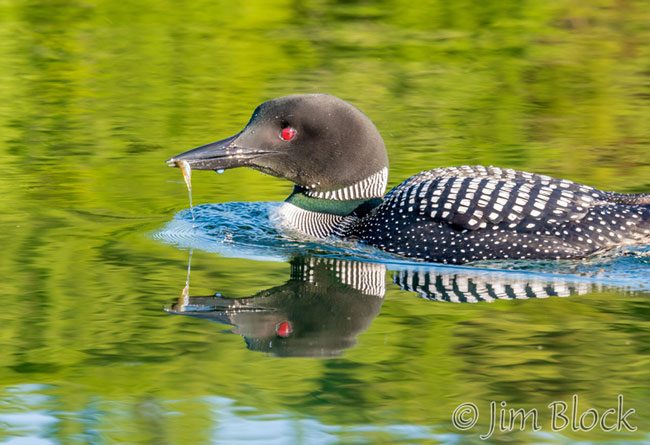
… but most of the time it was preening and stretching … and waiting for the other parent to return.
Here is a series of the chick preening and spinning near its parent.
At one point the chick nestled under a wing.
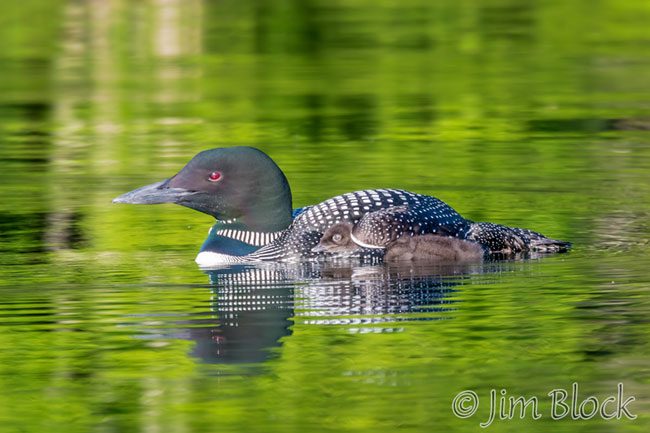
Mostly the action was very slow. And the morning was getting hot, even though it was only 7:30. So I decided to leave the loons for a while and paddle over to the mouth of a creek where I could float under the shade of some trees. I was only there for a few minutes before the most exciting adventure of the morning happened. And it only lasted 30 seconds. I posted it earlier. If you missed it you can read about this exciting half minute HERE. Hint, it involves a mink.
Emerging from the creek I saw the loon and chick had worked their way far out of the shallow part of the area. I was a considerable distance from them when I watched a boat pulling a young woman on skis run almost directly over them. They both dove, and it took what seems like minutes for them to surface. I thought they had perished.
Perhaps they learned their lesson. They began to swim back toward the shallow water. Maybe I helped as I positioned my kayak between them and the main lake. Here they are heading back.
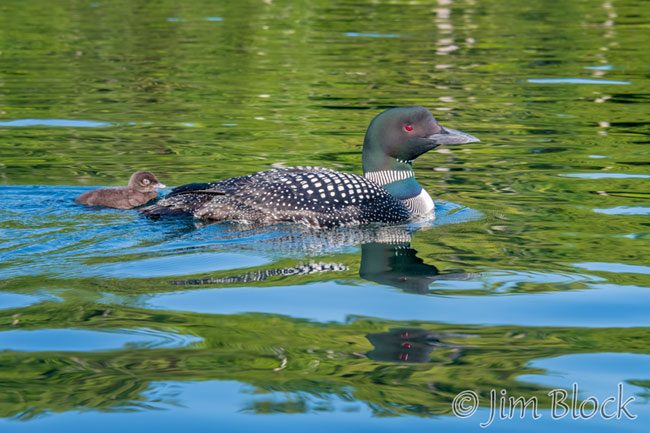
Back in a safer area there was some feeding.
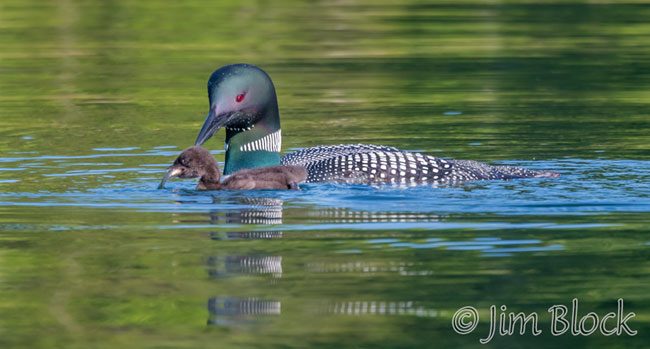
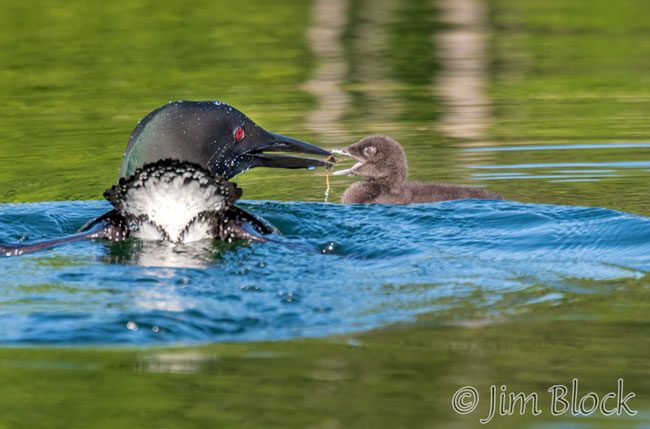
I took a last photo of the parent with its chick and paddled away. On my way back I passed the other parent returning. It had been gone for over 90 minutes.
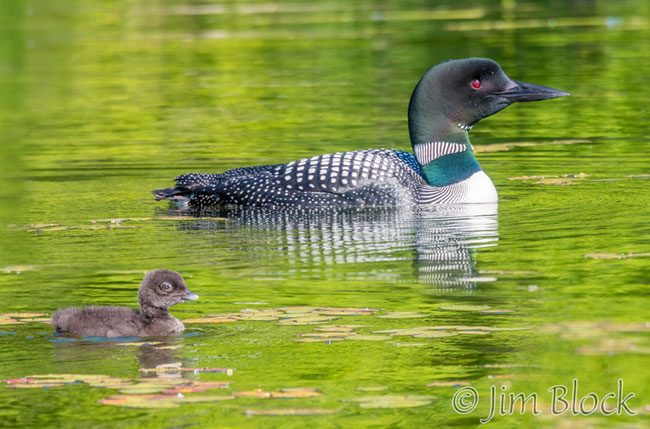
More Photos from the First Week
Here are some of the other photos I took the first week of Penny’s life. I hope he or she survives skiers, boats, snapping turtles, and eagles, and makes it safely to the coast this fall.
For those who care about such things, the main camera body I use these days for birds is a D500. I have 300mm, 200-400mm, and 200-500mm lenses and sometime use a 1.4x on the 200-400. These combination gives full-frame equivalents of 450mm, 750mm, and 840mm at the long ends.



